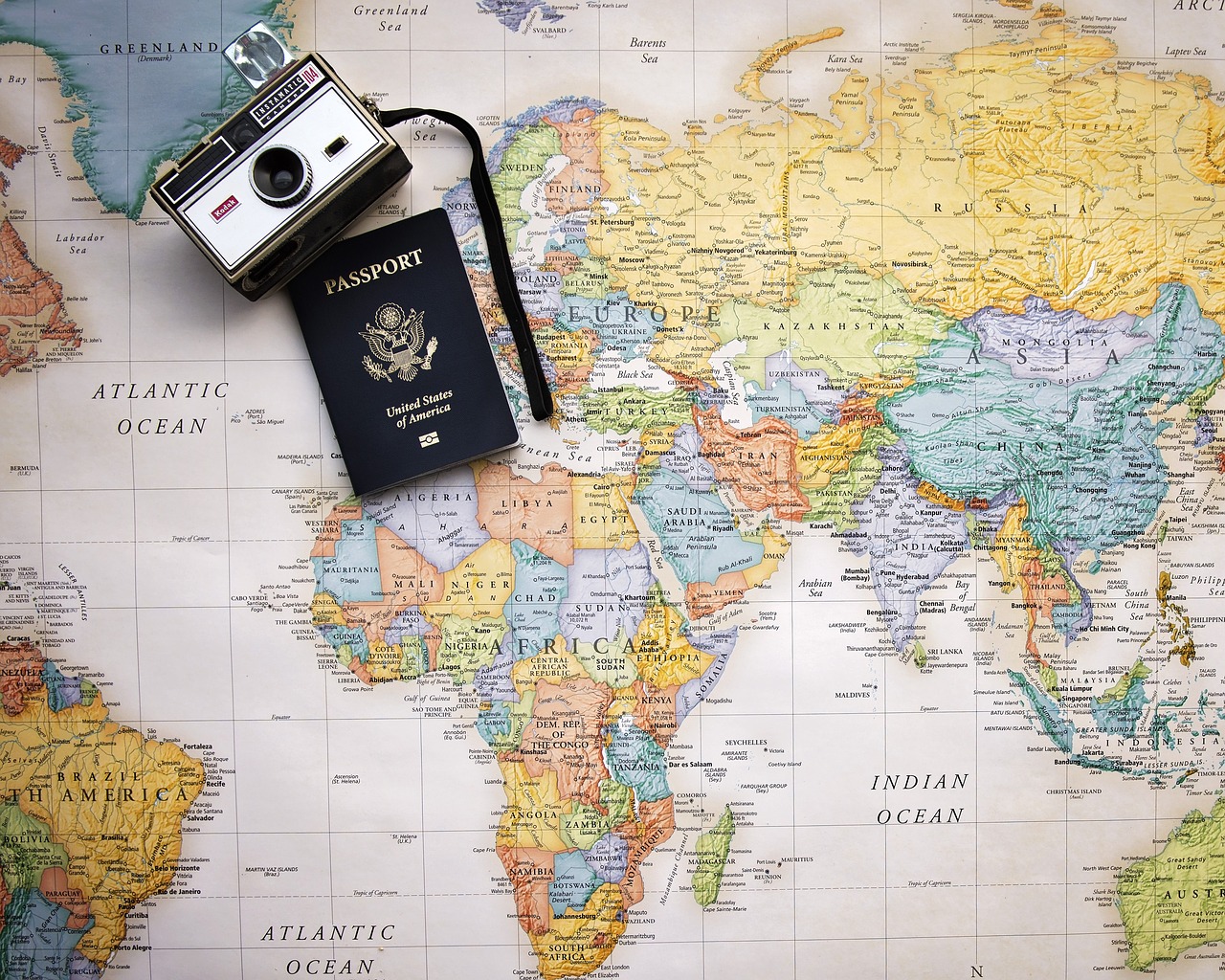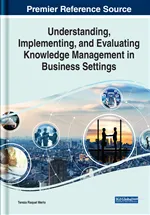

What is Inbound and Outbound Tourism?
by Hammad Ur Rehman | Oct 25, 2021 | Travel Guide | 6 comments

Don’t you just love traveling around the world and exploring different places? Staying or visiting different countries or states for the sake of fun-filled holidays or work-related visits, are termed tourism. Tourism can be of two types, Inbound tourism or Outbound Tourism. Now the question arises that what is inbound and outbound tourism?
Well, the difference between the two is just a matter of perspective, that is, from where and how you see it. In simple words, if we look from the USA tourism perspective, the outbound tourism would be Robert going to Pakistan, while inbound tourism would be, Ali coming to the USA. Similarly, if we look from a Pakistani tourism perspective, the outbound tourism would be Ali going to the USA, and the inbound tourism would be, Robert coming to Pakistan.
Let’s move on and further elaborate on these two types of tourism.
What is Inbound tourism?
Inbound tourism is economically significant for a country. The tourist countries economically rely on the inbound visitors to drive their maintenance, growth, and development.
What exactly is inbound tourism? In easy words, you can call it incoming tourism. Let’s move further to see the definitions, meanings, significance, drawbacks, and examples of inbound tourism.
Definition of inbound tourism
When someone travels to a country, other than their own country, for tourism, this is called inbound tourism.
Inbound tourism is frequently influenced by certain factors like:
- Season or Weather
- Public holidays
- School’s summer or winter vacations
According to WTO (World Trade Organization) and UN (United States Nation), inbound tourism can be defined as follows:
“ The act of traveling to another country for not more than one consecutive year for leisure, business, or other purposes .”
Importance of inbound tourism
Through foreign exchange, tourism may bring a lot of wealth into a country. This is especially advantageous in places where the local exchange rate is cheaper as compared to visitors’ native currency. Therefore, inbound tourism has high significance in many countries mainly because of the benefits it provides economically.
Mostly, countries target specific nations for advertising and promoting their inbound tourism. For instance, in today’s era, Chinese people tend to spend more on traveling every year as compared to any other nation, plus, the greatest outbound tourism markets are also produced by China. Therefore, Chinese inbound tourists are highly in demand by many tourist countries.
Drawbacks of inbound tourism
Depending entirely on income from the inbound tourism may cause problems. There are many places like Maldives, Goa, Fairy meadows, Greece, etc., whose economies rely on tourists from other countries.
The primary drawback of inbound tourism is that the place is at the hands of the transportation network. Many tourism industries have been ravaged as a result of airlines ceasing to operate a specific route. Cultural conflicts can also take place due to inbound tourism.
Some other disadvantages of inbound tourism include:
- Disposal, contamination, and emissions are all on the rise.
- Environmental and aquatic habitats are being physically harmed on a daily basis.
- Inappropriate buildings are being built next to historical places and monuments.
- Plenty of resources are being used up.
- Building infrastructure and utilization of land.
Inbound Tourism examples
Now that we have a basic understanding of inbound tourism, let’s look at some practical examples.
If a person from one country travels to another country for tourism, then it’s an inbound tourist. For example, Ali is having a summer break from his university and wants to go abroad. So, he decides to go for tourism to France and enjoys his summer break there. This is an example of inbound tourism because Ali is coming from Pakistan to France for his vacation, and it is a tourist activity for him.
Likewise, Robert is also having a summer break from his school and wants to visit another country. So, he decides to go for tourism to Pakistan and enjoys his summer break there. This is also an example of inbound tourism because Robert is coming from America to Pakistan for his vacation, and it’s a tourist activity for him.
Generally, some of the countries that are renowned for inbound tourism include Maldives, Goa, Greece, etc.
What is outbound tourism?
Leaving your homeland for the sake of gaining international tourism experience has wide importance for many countries.
Let’s jump into detail and find out what is outbound tourism, how do we define it, the importance of outbound tourism has it got any disadvantages, and a few examples of outbound tourism.
Definition of outbound tourism
When a tourist travels or visits outside his or her country for the sake of tourism, but not for more than a year. This type of tourism is called outbound tourism.
The WTO (World Trade Organization) and UN (United States Nation) define outbound tourism as follows, “The act of leaving your home country internationally for not more than one consecutive year for leisure, business or other purposes.”
Throughout the years, the market for outbound tourism has grown significantly. However, different regions of the world have different growth rates of the tourism market, but the factors leading to progress are similar.
Importance of outbound tourism
Outbound tourism also has a positive impact on the economy of the county. It provides economic improvements in a variety of industries such as education, healthcare, business, and retail, etc.
For example, the more people travel to foreign nations, the more their demands for products and services increase. Thus, it is a source of economic growth and prosperity for many countries.
This direction of tourism helps in increasing employment opportunities, foreign currency earnings, and trade balance. Thus, it is a source of economic growth and prosperity for many countries.
Within a very short period, China has become the largest source of outbound tourists. The increasing number of Chinese outbound tourists opens the gate of opportunities for tour group operating companies, hotels, national government ad retailers.
Drawbacks of outbound tourism
Apart from the advantages, there are a few disadvantages of outbound tourism as well. These drawbacks include the following:
- Many outbound tourists spend a huge amount of money on international chains like KFC fast-food chains, which reduces the positive effects of tourism as the tourist is using money that has been taken out of his residence.
- ·Sometimes, a country relies far too much on its outbound tourism market. For example, some Caribbean island nations depend on money from tourists to fund their entire economy and government, but this is a risky move as the tourism market is highly inconsistent, and a small incident can lead to a large drop in tourism.
Outbound tourism examples
Let’s go through an example of outbound tourism from the USA point of view:
John is a US citizen and has a passport to the USA. He wants to go for tourism so he can explore the international culture and experience new things. So, he goes for a tour to Spain with his family and friends. This is an example of outbound tourism because John has applied for a tourist visa and is traveling outside his country, USA.
Another example of outbound tourism from Spain’s perspective:
Robert is a tourist from Spain who wants to go for tourism in the USA, but he has no American visa. So, he goes for a tour to the UK with his family and friends. This is an example of outbound tourism because Robert has applied for a tourist visa and is traveling outside his country, Spain.
What is domestic tourism?
Until here, we discussed international inbound and outbound tourism. However, tourism can also be domestic. Now you would want to ask what is domestic tourism ?
Well, it’s very simple. In domestic tourism, the tourist visits different regions, cities, or towns of the same country where he/she resides. In easy words, domestic tourism is vacations spent within the same country you live in.
Let me give you an example of domestic tourism, Sarah lives in California, USA, and for her vacations, she visits Pennsylvania, USA.
Domestic tourism is used by the government to eradicate poverty, economic development, production of employments, infrastructure upgrades, reduce the load from overcrowding. For instance, If the government of California promotes domestic tourism within its state, then more people would come to visit various places in California, which are less popular, and it would boost the economy of California by providing employment opportunities to the people.
Also Learn: Domestic vs International Travel
Final Thoughts
In general, tourism contributes significantly to international trade and the provision of job opportunities in many nations. I hope this article has provided you with a clear picture of what are the types of tourism and why are they significant. All types of tourism are important for the economic growth of any nation.
Check our article on: What is FIT And GIT in The Tourism
Very helpful and very interesting
Nice Post. very well written and very impressive
My sister bookmarked this webpage for me and I have been going through it for the past several hours. This is really going to benefit me and my friends for our class project. By the way, I like the way you write.
Good day I am so happy I found your web site, I really found you by accident, while I was searching on Digg for something else, Anyhow I am here now and would just like to say kudos for a marvelous post and a all round interesting blog (I also love the theme/design), I don’t have time to read through it all at the minute but I have book-marked it and also included your RSS feeds, so when I have time I will be back to read a great deal more, Please do keep up the fantastic work.
I am so happy i have many to questions to answer travel and tourism and I can easily learnt tourism ?
I aam actually glad to gance att his blog poswts which contains plenty off helpful information, thanks for providin these statistics.
Submit a Comment Cancel reply
Your email address will not be published. Required fields are marked *
Save my name, email, and website in this browser for the next time I comment.
- Destinations (7)
- Resorts (1)
- Uncategorized (13)
Recent Posts
- Is Traveling a Hobby? (Learn About Travelling as a Hobby)
- Why is Traveling so Tiring?
- Why is Traveling Important? (9 Reasons Why It’s Important)
- 9 Things to Do Before Your Vacation
- How to Overcome Jet Lag Fast
- Skip to primary navigation
- Skip to main content
- Skip to primary sidebar

The Difference Between Inbound and Outbound Flights
Published/Updated: Nov 16, 2021 · Erica Ho · Under a minute read

Ever confuse the two? It confuses us, and we run a travel blog!
In a normal roundtrip flight, where a traveler is going to one destination and returning to the place they came from, the outbound flight is the flight to the destination and the inbound flight is the flight back to the origin city.
The first flight is outbound, the second flight is inbound.
Let's display this information in a totally dumbed down, kindergarten-level-esque image because most everyone has the focus and attention span of a squirrel these days.
No, we are not insulting anyone's intelligence at all.

Pretty clear, in our opinions.

Popular Posts

The Best One-Way Car Rental Discount Codes

Can I Mail or Ship a Package to a Hotel? Yes and Here’s How

What is inbound tourism explained and why does it matter?
Disclaimer: Some posts on Tourism Teacher may contain affiliate links. If you appreciate this content, you can show your support by making a purchase through these links or by buying me a coffee . Thank you for your support!
Inbound tourism is an important type of tourism . Many countries rely heavily on the demand from inbound tourists to fuel the development and operations of their tourism economy.
But what does it actually mean to be an inbound tourist? In this article I will explain what is meant by the term inbound tourism, provide definitions of inbound tourism and I will discuss the advantages and disadvantages of inbound tourism. Lastly, I will provide examples of destinations which have significantly sized inbound tourism markets.
What is inbound tourism?
Inbound tourism definitions, the importance of inbound tourism, uk inbound tourism, advantages of inbound tourism, disadvantages of inbound tourism, inbound tourism: conclusion, further reading on inbound tourism.
Inbound tourism is the act of someone travelling to a country other than that of where they live for the purpose of tourism.
Many countries around the world rely on inbound tourism.
Inbound tourism is often seasonal, meaning that many destinations will have evident peak, shoulder and low seasons. This is often dependant on weather conditions (for example sun or snow ) and school and public holidays.
The most widely utilised definition of tourism , proposed by the World Trade Organisation (WTO) and United States (UN) Nations Statistics Division (1994), prescribes that in order to qualify as a tourist one must travel and remain in a place outside of their usual residential environment for not more than one consecutive year for leisure, business or other purposes.
When considering inbound tourism, it therefore makes sense to simply add in the prerequisite of travelling to another country…
Based on this commonly accepted definition (although this is not without its limits- see this post for more details ), therefore, inbound tourism can be defined as:
‘The act of travelling to another country for not more than one consecutive year for leisure, business or other purposes.’
Inbound tourism is incredibly important in many destinations.
This is largely because of the economic benefits of tourism . Tourism can bring in a lot of money to a country through foreign exchange. This is particularly beneficial in countries where the currency is weaker than the currency of the tourists ‘ home countries.
It is for this reason that many countries will target their advertising towards certain nationalities. China produces one of the largest outbound tourism markets in the world and Chinese tourists tend to spend more on their holidays than any other nationality. Therefore many countries want to attract Chinese inbound tourists due to the economic value of this market.
Click here to see some interesting statistics demonstrating the growth in the Chinese outbound tourism market.
However, over dependance on inbound tourism can be risky business for destinations. There are many destinations, such as the Maldives , Spain and Greece who rely heavily on people travelling from other countries to their country for tourism.
The problem occurs when the travel industry is disrupted. This has never been more true than during the 2020 pandemic, when the impacts of Coronavirus on tourism were devastating.
Inbound tourism can also be negatively effected as a result of other factors, such as political unrest, natural disasters or economic instability.
In order to ensure sustainable tourism principles are adopted, destinations ideally need to diversify their tourism product to appeal to both the domestic tourism market and the inbound tourism market.

In The United Kingdom, we have a sizeable inbound tourism industry.
Here, inbound tourism is worth £127 billion per year to the UK economy. Inbound tourism creates jobs and boosts the economic throughout the country.
According to the UK tourist board, Visit Britain , inbound visitors to the UK spent £24.5 billion in 2017, and £21 billion of that was spent in England.
Inbound tourism attracts tourists from all over the world including Europe, the USA, Australia , China and Japan.
Inbound tourism markets around the world
Inbound tourism is a significant part of the tourism industry in many countries around the world.

The OECD have some useful data, demonstrating the most recent figures for inbound tourism around the world.
To take a look at the most recent OECD inbound tourism figures click here.
Here are a few tourism markets that have a high number of inbound tourists each year-
According to Statistica , Spain ranked second on the World Tourism Organisation’s list of most visited countries in the world, with its number of international visitors amounting to nearly 89.4 million in 2018.
Most travellers to Spain come from Europe, with the largest amount of tourists being British.
Spain is popular for its beach holidays, package holiday market and city breaks to Barcelona, Madrid and Valencia, amongst others.
The Maldives has been host to a fast-growing tourism industry in recent years. The archipelago attracts visitors all-year round, especially in hubs like Male which is home to an increasing number of modern hotels.
Statistica reported in February 2019 that there were sharp increases in economic activity in The Maldives resulting from tourism. Figures showed a 16.8% increase in inbound tourism from the same time the previous year.
In total, 168,583 inbound tourists were recorded in The Maldives in 2019. China accounted for 17.8% and European markets accounted for a further 55% of inbound tourism.
The Maldives is renowned for its luxurious beach holidays.
Inbound tourism is one of the biggest economic activities in Thailand .
The National Economic and Social Development Council (NESDC) stated that in February 2019 the tourism industry accounted for 18.4% of GDP. Chinese visitors make up almost one third of all inbound tourists travelling to Thailand , with 10.99 million visits recorded in 2019.
There are many types of tourism found in Thailand and Thailand attracts a range of types of tourists, from backpackers to luxury travellers to business tourists .
Bali is another destination that is reliant on inbound tourism as a key economic contributor.
In 2018, the number of foreign tourists travelling to Bali was over 5 million. This was an increase of approximately 3.5 million from 2008. Figures taken from Statistica .
The inbound tourism market in Bali is dominated largely by Chinese and Australian tourists.
Bali is well-known for its beach escapes and cultural tourism .
There are many advantages of inbound tourism.
One advantage is that inbound tourism is not reliant on weekends in the way that domestic tourism is because people tend to your their annual leave when they take holidays overseas.
Having an inbound tourism market that attracts tourists from a range of destinations can help to minimise risk and diversify income. This way, if for some reason one country does not send many tourists (for example due to political or economic problems) then the host country still has visitors arriving from other countries.
On average, inbound tourists spend more money than domestic tourists. This money then helps boost the economy of the host country.
When we travel overseas we typically book further in advance than if we booked a domestic trip. This allows tourism organisations more time to plan.
Foreign income can really help to boost the economy of a country. Therefore foreign tourists are often welcomed. This especially applies to tourists who come from destinations where the currency is strong (e.g. Britain, USA, Europe, Australia).
Other posts that you might be interested in: – What is tourism? A definition of tourism – The history of tourism – The structure of the tourism industry – Stakeholders in tourism – Dark tourism explained – What is ABTA and how does it work? – The economic impacts of tourism
There are also some disadvantages of inbound tourism.
The main disadvantage of inbound tourism is that the destination is at the mercy of the transport network.
There are many cases of tourism industries being decimated because an airline has stopped operating a particular route.
Inbound tourism can also lead to culture clashes.
For example, British tourists who travel to Dubai are often not aware of Muslim cultural practices. As such, it is common for the local population to be offended by the tourist’s behaviour. In Dubai there are many signs up in the malls, for instance, that requests tourists cover up and dress appropriately .
In conclusion, it can be seen that inbound tourism is a highly effective way for a country to make money from tourism. Whilst this does take some careful management and planning, there are many countries throughout the world who have successful and thriving inbound tourism industries.
- An Introduction to Tourism : a comprehensive and authoritative introduction to all facets of tourism including: the history of tourism; factors influencing the tourism industry; tourism in developing countries; sustainable tourism; forecasting future trends.
- The Business of Tourism Management : an introduction to key aspects of tourism, and to the practice of managing a tourism business.
- Tourism Management: An Introduction : gives its reader a strong understanding of the dimensions of tourism, the industries of which it is comprised, the issues that affect its success, and the management of its impact on destination economies, environments and communities.
Liked this article? Click to share!
Outbound vs Inbound Flight: Travel Tips
- January 25, 2024

When it comes to planning a trip, whether it be for business or pleasure, the process of booking flights can often be overwhelming. With so many options available, it can be difficult to determine which type of flight is best suited for your travel needs. In this article, we will explore the differences between outbound and inbound flights and provide you with valuable tips to help you make an informed decision. So, whether you’re a seasoned traveler or embarking on your first adventure, read on to discover how to make the most of your journey.
The Key Differences: Outbound vs Inbound Flights
Before we delve into the tips and tricks of booking outbound and inbound flights, let us first understand the fundamental differences between the two. Outbound flights refer to the leg of your journey that takes you from your departure airport to your destination. This is typically the initial flight you take when embarking on your trip and is often where the excitement and anticipation begin to build. In contrast, inbound flights are the return journey that takes you back to your original departure point or to a different location if you have planned a multi-destination adventure.
Booking Your Outbound Flight: Tips for a Smooth Start
Now that you have a clear understanding of the distinction between outbound and inbound flights, let’s focus on the first leg of your journey – the outbound flight. Here are some essential tips to ensure a smooth start to your travel experience:
- Research and Compare Airlines: Take the time to research and compare different airlines to find the one that best suits your needs. Consider factors such as baggage allowance, in-flight amenities, and customer reviews.
- Use Price Comparison Websites: Utilize price comparison websites to find the best deals on flights. These platforms allow you to compare prices across multiple airlines, helping you find the most cost-effective option.
- Be Flexible with Travel Dates: If possible, try to be flexible with your travel dates. By choosing off-peak times or weekdays, you may be able to secure better deals on flights.
- Opt for Non-Stop Flights: While layovers can sometimes be unavoidable, opting for non-stop flights can save you time and reduce the stress of navigating through multiple airports. Consider the duration of layovers and weigh the convenience against the cost.
Maximizing Your Inbound Flight: Tips for a Memorable Return
As your trip comes to an end, it’s essential to make the most of your inbound flight. Here are some tips to ensure a memorable return journey:
- Choose a Suitable Arrival Time: Consider your transportation options upon arrival and choose a flight that aligns with those options. Arriving during rush hour or late at night may impact your ability to reach your final destination comfortably.
- Stay Hydrated and Comfortable: Long-haul flights can be exhausting, so it’s crucial to stay hydrated and comfortable during your journey. Pack a refillable water bottle and dress in layers to adapt to changing cabin temperatures.
- Keep Valuables and Essentials in Your Carry-On: To avoid the risk of lost luggage, keep your valuables, travel documents, medications, and any other essentials in your carry-on bag. This ensures easy access and provides peace of mind throughout your journey.
- Make the Most of In-Flight Entertainment: Many airlines offer a wide range of in-flight entertainment options, from movies and TV shows to music and games. Take advantage of these amenities to make your journey more enjoyable.
In conclusion, understanding the differences between outbound and inbound flights is crucial for making informed decisions when planning your travel itinerary. By following the tips outlined in this article, you can ensure a smooth and enjoyable journey from start to finish. Remember to research airlines, compare prices, and consider your travel needs when booking your outbound flight. Similarly, make the most of your inbound flight by choosing a suitable arrival time, staying comfortable, and keeping essentials in your carry-on. With these tips in mind, you’re well-equipped to embark on your next adventure with confidence. Safe travels!
Note: This article is for informational purposes only and does not constitute professional advice. Always consult with a travel professional or airline representative for specific guidance and information related to your travel plans.
Leave a Reply Cancel reply
Your email address will not be published. Required fields are marked *
Save my name, email, and website in this browser for the next time I comment.
Mexico Plugs vs US: Electrical Adapter Guide
Vs 141: exploring mysterious flight disappearance, you may also like.

Family Packing Tips: Organizing for Every Member
- February 14, 2024

Cancun vs Playa del Carmen vs Tulum: Best Riviera Maya Destination

36 Pages vs. 60 Pages in Passport: Understanding Passport Types

JetBlue vs United: Airline Service Comparison

Historical Travel: Time-Traveling to the Past
- February 13, 2024
Swiss Half Fare Card vs Swiss Pass: Travel Cards
Inbound Tourism
- Living reference work entry
- Latest version View entry history
- First Online: 05 February 2022
- Cite this living reference work entry

- Shalini Singh 3
15 Accesses
UNWTO defines inbound tourism as all incoming nonresident arrivals to a targeted destination. Evidentially, this interpretation pertains to international tourists; as such, the foremost choice of travel mode among inbound tourists is by air, by road, and, peripherally, by water and rail.
Long-haul nature of inbound travel can give rise to high expectations among travelers. For instance, pleasure seekers from developed countries look for at par amenities and services at their choice destinations. Primary travel purposes are leisure, recreation, and holidaying in destinations with a perceived exotic novelty to them. Secondary reasons include health, religion, and visiting friends and relatives.
Two key segments of inbound tourism include business, conference, and profession-related arrivals and diasporic (or emigrant) visitors to their respective homelands. The innumerable preferences and options for inbound tourism lend to the existence of two forms: institutionalized (group/individual...
This is a preview of subscription content, log in via an institution to check access.
Access this chapter
Institutional subscriptions
Cortes-Jimenez, I., and M. Pulina. 2010. Inbound tourism and long-run economic growth. Current Issues in Tourism 13: 61–74.
Article Google Scholar
Dwyer, L., and P. Forsyth. 1993. Assessing the benefits and costs of inbound tourism. Annals of Tourism Research 20: 751–768.
Otoo, F., S. Kim, and D. Stylidis. 2021. Diaspora tourists’ emotional experience. International Journal of Tourism Research .
Google Scholar
Sahli, M., and J. Nowak. 2007. Does inbound tourism benefit developing countries? A trade theoretic approach. Journal of Travel Research 45: 426–434.
UNWTO. 2020. World Tourism Barometer and Statistical Annex (December). https://www.e-unwto.org/doi/epdf/10.18111/wtobarometereng.2020.18.1.6 . Accessed 29 Dec.
Download references
Author information
Authors and affiliations.
Brock University, St. Catharines, Canada
Shalini Singh
You can also search for this author in PubMed Google Scholar
Corresponding author
Correspondence to Shalini Singh .
Editor information
Editors and affiliations.
School of Hospitality Leadership, University of Wisconsin-Stout, Menomonie, WI, USA
Jafar Jafari
School of Hotel and Tourism Management, The Hong Kong Polytechnic University, Hong Kong, Hong Kong
Honggen Xiao
Section Editor information
Department of Geography and Environmental Studies, University of Haifa, Haifa, Israel
Yoel Mansfeld Ph.D
Rights and permissions
Reprints and permissions
Copyright information
© 2021 Crown
About this entry
Cite this entry.
Singh, S. (2021). Inbound Tourism. In: Jafari, J., Xiao, H. (eds) Encyclopedia of Tourism. Springer, Cham. https://doi.org/10.1007/978-3-319-01669-6_563-2
Download citation
DOI : https://doi.org/10.1007/978-3-319-01669-6_563-2
Received : 03 March 2021
Accepted : 03 July 2021
Published : 05 February 2022
Publisher Name : Springer, Cham
Print ISBN : 978-3-319-01669-6
Online ISBN : 978-3-319-01669-6
eBook Packages : Springer Reference Business and Management Reference Module Humanities and Social Sciences Reference Module Business, Economics and Social Sciences
- Publish with us
Policies and ethics
Chapter history
DOI: https://doi.org/10.1007/978-3-319-01669-6_563-2
DOI: https://doi.org/10.1007/978-3-319-01669-6_563-1
- Find a journal
- Track your research

Before you go, check this out!
We have lots more on the site to show you. You've only seen one page. Check out this post which is one of the most popular of all time.
The Ultimate Guide All About Outbound Tourism
All About Outbound Tourism, also known as international tourism, is an ever-growing sector that has been gaining popularity in the past few decades. With the increase in globalization, people have become more interested in exploring new cultures, cuisines, and destinations around the world.
In this highly competitive travel industry, it’s important to understand the ins and outs of outbound tourism to stay ahead of the game. Whether you’re a travel enthusiast, a travel agent , or a seasoned professional in the industry, this ultimate guide will provide you with a comprehensive understanding of outbound tourism.
We will discuss everything you need to know about outbound tourism, including the current trends, the top destinations, the benefits and challenges of outbound tourism, and the best practices for the industry. We will be delving into the different types of outbound tourists, such as business, adventure, and leisure travelers, and their unique requirements.

All About Outbound Tourism In Details

Traveling overseas to experience new cultures is becoming increasingly popular among leisure travelers. This section covers everything you need to know All About Outbound Tourism its definition, reasons why it’s preferred over domestic travel, top destinations favored by outbound tourists like Spain and France, and planning tips.
It’s worth noting that international tourism supports economies around the world with a positive impact on GDP, as per WTO and United Nations reports.
Historical Overview Of Outbound Tourism
Outbound tourism, or traveling to a foreign country for leisure or business purposes, has a long and fascinating history. While ancient civilizations such as the Greeks and Romans engaged in travel for trade and diplomacy, it wasn’t until the 19th century that leisure travel began to take off.
The advent of steamships and railways made it easier and more affordable for people to travel abroad, leading to the rise of mass tourism. In the early 20th century, advancements in aviation technology further revolutionized outbound tourism.
Air travel has become faster and more comfortable, making it possible for people to visit far-off destinations in hours rather than days or weeks. Outbound tourism is a major industry today, with millions of people traveling abroad each year for vacation, education, business, and other purposes.
As technology continues to evolve and the world becomes increasingly connected, it will be interesting to see how outbound tourism continues to change and adapt over time.
Factors Affecting Outbound Tourism
There are several factors that can affect outbound tourism, including economic conditions, political stability, cultural differences, and technological advancements. Economic conditions play a significant role in outbound tourism, as individuals are more likely to travel when they have disposable income and job security.
Political stability is also an important factor, as individuals are less likely to travel to countries with high levels of political unrest or instability. Cultural differences can also impact outbound tourism as individuals may be hesitant to visit countries with vastly different customs and traditions than their own.
Technological advancements have also made travel more accessible and affordable, allowing more individuals to participate in outbound tourism. By considering these factors when planning for outbound tourism, individuals can make informed decisions and have a safe and enjoyable travel experience.
Planning An Outbound Trip

Planning an outbound trip can be an exciting and daunting task. To ensure a smooth and enjoyable experience, it is important to consider a few key factors before embarking on your journey. First, decide on your destination and research any necessary visas or travel requirements.
Next, budget your trip, including transportation, accommodation, and activities. Creating an itinerary to make the most of your time abroad may also be helpful. When booking flights and accommodations, compare prices and read reviews from previous travelers.
Finally, don’t forget to purchase travel insurance to protect yourself in case of any unexpected events. With careful planning and preparation, you can have a successful outbound trip filled with new experiences and unforgettable memories.
Choosing A Destination
Choosing the right destination is crucial while planning an outbound trip for leisure or vacationing abroad. Cost-effectiveness, accessibility by air or road transport, and safety concerns must be considered when selecting a place.
Researching the local culture and customs can ensure that travelers are respectful to natives and avoid offending them at any cost. Weather patterns and climatic conditions in the desired location are equally important before making any reservations. Opt for a spot that caters to your interests, such as historical sites or adventure activities.
Transportation Options For Outbound Travel

Travelers going on an outbound trip have multiple transportation options to choose from. For longer distances, air travel is the most popular and convenient choice. Land transport like buses, trains, and cars can be chosen if you’re traveling shorter distances or in groups.
Sea transport options such as cruises and ferries offer a unique experience with onboard amenities while exploring different destinations. Budgets and personal preferences help determine which mode of transportation to select.
Accommodation Options For Outbound Travel
When selecting accommodation options for outbound tourism, you must take into account your budget and travel style. Hotels are renowned for their variety of services and facilities; however, they tend to be more costly than other choices.
Hostels are an economical option that fosters socializing amongst travelers while sacrificing privacy. Vacation rentals provide homelike vibes, with kitchens and living rooms requiring prior scheduling. Homestays offer an authentic experience of the local culture but necessitate adaptability.
Activities And Attractions For Outbound Travel

When traveling outside your home country for leisure or business purposes, there are many activities and attractions you can experience as part of outbound tourism. From sightseeing to adventure sports and cultural experiences to food tours, there is truly something for everyone.
Popular outbound tourist attractions include museums, historical sites, national parks, and beaches. As always, conducting thorough research before departure ensures a meaningful travel experience. Outbound tourism has a positive impact on global economies through international trade growth and inbound tourism increases.
Cultural Considerations For Outbound Travel
When planning an outbound trip, it is essential to consider cultural differences in your destination. Understanding different customs and traditions can help you avoid potential misunderstandings while traveling abroad. Dressing appropriately and respecting religious practices are also important factors to consider.
Awareness of these cultural considerations will help make your outbound travel experience even more enjoyable. Outbound tourism significantly contributes to the GDP of many countries, including Spain, France, America, Germany, Australia, Italy, Japan, and Thailand.
Health And Safety Precautions For Outbound Travel

To avoid potential health and safety risks while traveling outbound, it’s vital to research potential risks and take necessary precautions.
This can include obtaining vaccinations or medications before the trip, packing appropriate clothing and gear based on local weather conditions, researching any safety concerns or political instability in the destination such as in the United States or Spain, being aware of cultural norms like respecting religious practices and restrictions on photography or other activities such as leisurely visits to France’s wine country.
Outbound travelers should also keep in mind the positive impact of outbound tourism on GDPs, like in Germany or Australia, as well as international trade per the WTO. By following these guidelines for safe travel during outbound tourism, you can enjoy your travels worry-free.
Economic Impact Of Outbound Tourism
Outbound tourism can have a significant economic impact on both the home country and the destination country. Individuals who travel abroad typically spend money on transportation, accommodations, food, and entertainment. This spending can generate revenue for local businesses and help stimulate the destination country’s economy.
Additionally, outbound tourism can create job opportunities in the travel industry and related sectors such as hospitality and transportation. On the flip side, outbound tourism may also have an impact on the home country’s economy. While individuals are spending money abroad, they may not be contributing to their home country’s economy.
However, some argue that outbound tourism can also benefit the home country by promoting cultural exchange and increasing international cooperation. Overall, outbound tourism has both positive and negative economic impacts that should be carefully considered when analyzing its effects on society.
The Benefits Of Outbound Tourism

Outbound tourism, or traveling outside of one’s home country, can have numerous benefits for individuals and society as a whole. For individuals, outbound tourism can provide new experiences, cultural immersion, and personal growth. It can also be a way to escape from the stresses of everyday life and recharge.
From a societal perspective, outbound tourism can bring economic benefits to both the home country and the destination country. It can create job opportunities in the travel industry and support local businesses.
Outbound tourism can also foster cultural exchange and promote understanding between different countries and cultures. Overall, many benefits to outbound tourism make it a worthwhile endeavor for both individuals and society.
The Impact Of Outbound Tourism On The Economy
Outbound travel continues to be a major contributor to economies around the world. It plays a crucial role in job creation and increased revenue across regions like Europe and Asia. In fact, many countries like Spain and France rely heavily on inbound tourists for their GDP growth.
Governments should continue implementing policies like visa facilitation or marketing campaigns that support this growing market. While it’s true that there are negative impacts like environmental degradation or cultural homogenization associated with it, we need to strike a balance between promoting outbound tourism for economic benefits and ensuring sustainable practices.
Planning an outbound trip can be a daunting task, but with the right information and preparation, it can be a wonderful experience. From choosing a destination to picking the right transportation and accommodation options, there are many factors to consider for a successful trip .
Understanding outbound tourism’s historical overview and cultural considerations can help you navigate different customs and traditions. It’s also important to take health and safety precautions to avoid potential risks while traveling. All About Outbound Tourism not only benefits individuals but has a significant impact on the economy as well.
Frequently Asked Questions
What is outbound tourism.
Outbound tourism means traveling from one’s home country to another destination for leisure or business. It has become more popular due to advancements in transportation and communication. This type of tourism benefits both the home country and the destination economically. Sightseeing, shopping, and trying new cuisines are among the favorite activities of outbound tourists.
What Are Examples Of Outbound Travel?
Outbound travel involves leaving one’s home country for another, be it for leisure, education, business, or other purposes. Examples include vacations, conferences, visiting loved ones, volunteering, and adventure tourism. Thorough research and planning are essential for a successful and safe trip.
What Is The Role Of An Outbound Tour Operator?
An outbound tour operator is responsible for arranging travel plans for people traveling outside of their home country. They collaborate with airlines, hotels, and transportation providers to create all-inclusive travel packages, handle visa applications and logistics, and aim to provide a stress-free and pleasurable experience for their clients while discovering new places.
What Are The 4 Main Types Of Tourism?
Tourism can be divided into four main categories: cultural, adventure, eco, and leisure. Cultural tourism involves visiting historical sites and landmarks to learn about a region’s culture. Adventure tourism involves thrilling activities like skiing or bungee jumping. Eco-tourism promotes sustainable practices and supports conservation efforts. Leisure tourism is a more relaxed form of travel for rest and relaxation.
What Are Some Popular Destinations For Outbound Tourism?
The choice of an outbound tourism destination depends on the traveler’s preferences and budget. Popular options include Europe, Southeast Asia, Australia, and the US, as well as beach destinations such as Mexico, Thailand, and the Maldives. Adventure travel to places like New Zealand, Iceland, and Canada is also becoming more popular.
Michael C. Herrera
I’m a travel blogger with a focus on safety. I’ve been to all seven continents, and I love sharing my tips for staying safe while traveling. I also have a lot of experience with travel hacking and finding the best deals on airfare and hotels. My blog features reviews of restaurants, hotels, and attractions around the world.
Leave a Reply Cancel reply
Your email address will not be published. Required fields are marked *
Save my name and email in this browser for the next time I comment.
Recent Posts
Flixbus Luggage - What You Need To Know
When travelling by bus, you must consider the amount and type of luggage you'll bring. That's where FlixBus luggage comes in. FlixBus is a popular bus company that operates in Europe and the United...
Lucas Luggage Replacement Wheels: A Simple Guide
Lucas luggage replacement wheels are an essential component for any frequent traveler. These wheels are designed to replace worn-out or damaged ones on your existing Lucas luggage. Providing an...

The differences between outbound and inbound tour operator agents

By Blake Ng — 25 Mar 2018
distribution inbound tour operator inbound travel outbound tour operator outbound travel
Updated January 2023 – Are you a tour operator trying to find which option is best for you? Or alternatively, are you a tourism professional trying to set up your distribution system? Trying to make your mark and stand out in a highly competitive industry? Let’s start at the beginning to help you understand the types of travel agents available to partner with.
The role of a tour operator is to brainstorm ideas and conduct research to design holiday packages for travelers. In essence, they curate and compile various travel elements into a package that people will find appealing — creating a tailored and individual experience based on the interests and needs of various travelers. Holiday packages usually combine accommodation, cuisine, sightseeing, and transport.
Inbound vs. outbound travel

An inbound tourist is someone who visits a country but is not a resident of it. In outbound tourism, residents of a country visit another country. Does this sound like two sides of the same coin? That’s because it is.
Let’s look at an example:
Kevin, an Australian citizen, is traveling to Argentina for a holiday.
Kevin is an inbound tourist to Argentina. In contrast, Kevin is an outbound tourist from Australia.
Depending on where Kevin chooses to organize his holiday packages will depend on if he makes use of inbound tourism or outbound tourism.
An inbound tour operator will sell to people soon to be arriving in their countries, whereas an outbound tour operator will sell to people before they arrive at their destination.
Inbound tour operator agents
An inbound tour operator, also known as a destination management company, is a locally-based business or individual that provides holiday planning. This includes itinerary planning and arrangement of payment for their overseas clients.
Inbound tour operators deal with both individuals and groups of international travelers. They make arrangements that are specifically catered to international guests, ensuring their clients have a comfortable and enjoyable stay.
An inbound operator can work with the convenience of being able to operate at the same location in which they are organizing the holiday packages. Compared to outbound tour operators, an inbound operator would better understand the local area and its culture. This is especially true when receiving any inquiries or questions about tour information from a potential client. Additionally, an inbound tour operator is usually encouraged to develop strategic partnerships with other local companies and tour and activity operators . Building these relationships is a lot easier due to geographical location.
Inbound tour operators are locally based

The purpose of inbound tour operators is to promote the entire destination to potential visitors from their local viewpoint. The operational advantage of being locally based is having easy access to work with other companies to promote the location as a whole to interested overseas travelers. Additionally, inbound tour operators can offer a more personalized service to their customers by having direct contact with them in their chosen destinations.
Inbound tour operators often work with other travel agents and distribution partners
Tour packages are often created and promoted by inbound tour operators in partnership with other travel agent s and travel distribution channels . Inbound tour operators work under the assumption that travelers are often motivated by package deals and promotions, and take advantage of this when marketing their destination. This means it’s beneficial for inbound tour operators to create packages that include local tourism businesses such as hotels, transportation, and tours and activities. Following that, these same packages are promoted to segments of the target market that are most likely to visit the region in the near future.
Choose an inbound tour operator if:
Working with an inbound tour operator is a good idea if you want to increase your visibility in a chosen destination. This will be increasingly beneficial if your target market shows interest in package deals.
Outbound tour operator agents

A typical outbound tour operator works with international tourists. In contrast to inbound tour operators, outbound tour operators take travelers overseas from their home country. They offer a variety of tour packages that enable tourists across borders to travel abroad easily.
Outbound tour operators contribute significantly to the destination country’s economic growth. The majority of outbound tour operators choose to focus on a specific destination. This may be a destination that is currently popular or a destination in which they have special expertise and distribution partners.
Most outbound tour operators cater to international travelers.
Outbound tour operators offer travelers the convenience of visiting another country of their choice through tour packages. When travelers book a tour with an outbound tour operator, they can get everything they need under one roof — simplifying the travel experience.
A particular region of the world is often their specialty
Outbound tour operators have the benefit of being experts in the destinations they serve. European destinations are a very popular choice with outbound tour operators; however other destinations, such as Southeast Asia and the Middle East, are growing in popularity. A successful outbound tour operator will often be very tuned-in to trends, one step ahead of the crowds, so they know which destinations to specialize in next.
Choose an outbound tour operator if:
If your business strategy includes targeting international travelers, partnering with an outbound tour operator is likely to be a good fit. Additionally, an outbound tour operator will be a good fit if you understand overseas offerings and have the ability to promote them to domestic customers.
Advantages and Disadvantages

Just like running any form of travel company, there will always be some advantages and disadvantages. before working with either an inbound or outbound tour operator, here are a few pros and cons you should consider.
Inbound tour operators
As an inbound tour operator, you’ll have the advantage of convenience. This is due to being able to operate in the same location or home country as the tours you offer. This is extremely beneficial when receiving any inquiries or questions about the tours as you’d have a greater understanding of the local area and its culture compared to outbound tour operators. Furthermore, as an inbound tour operator, developing strategic partnerships and forming great relationships with other local companies and tour and activity operators will be a lot easier and is usually encouraged.
Another major advantage an inbound tour operator has is that most of the interactions with their customers will be direct. Meaning, it will allow them to offer a more personalized experience based on their customer’s needs.
Outbound tour operators
Just like the inbound operators, outbound tour operators deal with customers from their own countries. This makes designing and creating tour packages a whole lot simpler as they can customize the tours based on the customer’s interests. However, a disadvantage outbound tour operators have is not being based on the travel destination itself. This could create problems and can be more difficult to resolve any issues that may arise.
Fortunately, outbound tour operators have the flexibility to update their products and packages based on the latest travel trends and demands. As we all know, the travel industry is highly competitive and constantly evolving. Offering outbound tours gives you the freedom to adapt to changes in the travel and tourism market swiftly.
Which one should you choose?
The key difference between inbound and outbound tour operators comes down to whether they provide tours in their home country or abroad. You should consider both types of tour operator agents when developing your distribution strategy. Partnering with these two agents will maximize your reach to both international and domestic travelers.
Now, it’s time to think about ways to make your distribution and marketing channels more effective. You can identify your key partners via your research or by connecting with a tour wholesaler . By establishing partnerships with a large tour operator network , you can advance your business — both inbound and outbound. Read our previous blog if you are looking for tips and tricks for partnering with travel agencies or download our online distribution ebook today.
In general, both types of tour operator agents play an important role in the overall success of your distribution strategy. By partnering with both of these agents, you’ll be able to maximize your reach to both international and domestic travelers.
When bookings start to come through, you’d want to ensure that you’re providing your customers with a simple booking journey. By utilizing an online booking software , you’re not only simplifying the customer’s booking journey, you’re streamlining your processes as well. This is due to advanced features that automate your processes that allow your customers to make a booking on the spot. These features include a real-time availability viewer, that allows your customers to book based on your exact availabilities. Payment gateway integrations that provide your customers with the convenience of secure online payments. And Automatic communication, which sends your customers confirmation and updates regarding their bookings.
To top this all off, you can easily manage your partnership with both outbound and inbound tour operators via an online tour operator marketplace like Rezdy Channel Manager . Rezdy’s marketplace broadens your reach to over 25,000 active resellers in the industry.
Using Rezdy Channel Manager is as simple as:
- Naming your price
- Setting your rates
- Letting resellers sell and promote your products
On top of that, you don’t have to worry about collecting payments and paying commissions as Rezdy automatically organizes payments for both parties. This reduces the need to chase your agents for payments.
Ready to capture more inbound and outbound bookings with Rezdy? Start a FREE 21-day trial or book a free demo today.
If you enjoyed this article, then make sure to sign up for our newsletter where you’ll receive the latest marketing tools and tour operator tips designed with businesses like yours in mind.
Start free trial
Enjoy 21 days to take a look around and see if we are a good fit for your business.
No obligations, no catches, no limits, nada
Distribution

eBook: Guide to growing your tourism business through distribution & channel management tools

How to navigate API connections with resellers

Case Study: Wendella Tours & Cruises
Inbound travel
Inbound travel is all incoming international tourist traffic to a country of destination. Inbound tourists are foreign visitors who arrive in a country other than their country of residence for a period of up to 12 months for business, leisure , and other purposes.
Inbound tour operators , destination management companies , and other travel organizations make travel arrangements in the host country for tourists coming from abroad (other tour operator categories include outbound , domestic , and ground ).
An inbound flight is one arriving at the airport of destination, as opposed to outbound flights, which depart from an airport.

Recommended content for you
Video: flight booking algorithm: steps and key systems, history of flight booking: crss, gds distribution, travel agencies, and online reservations, video: how supersonic flights might finally return, video: seasonal travel and why we may want to reduce it, flight booking process: structure, steps, and key systems.
Our website uses cookies to ensure you get the best experience. By browsing the website you agree to our use of cookies. Please note, we don’t collect sensitive data and child data.
To learn more and adjust your preferences click Cookie Policy and Privacy Policy . Withdraw your consent or delete cookies whenever you want here .
Get in Touch
Yes, I understand and agree to the Privacy Policy
UN Tourism | Bringing the world closer
Share this content.
- Share this article on facebook
- Share this article on twitter
- Share this article on linkedin
A compilation of data on outbound tourism by country, including data on international tourism expenditure and outbound trips.
COUNTRY PROFILE – OUTBOUND TOURISM
In order to better understand outbound tourism, the World Tourism Organization (UNWTO) has launched a dashboard on country profiles with data on outbound tourism .
The dashboard includes data on:
- International tourism expenditure
- International tourist departures
- Comparison of source markets
- Ranking of indicators on outbound tourism

Outbound Vs Inbound Tour Operators
For Tour Operators, deciding which type of tours to offer and which market to specialise in can be a difficult task.
Despite the huge impact of the COVID-19 pandemic on travel, with the global industry having lost $4.5 trillion in 2020, tourism is now experiencing a revival as international borders begin to reopen.
Now is the perfect time to take advantage of the increased demand for travel and improve your business strategy.
Whether you’re looking to diversify your offerings, move into a new market or are just starting out in the industry, we are here to give you some useful advice that will help you to find the best option for your company.
Which Type of Tour Operator Are You?
Before you begin to market and sell your tours, it is important to determine which type of tour operator you are in order to develop an effective strategy, find out who your potential customers are and stand out against competitors.
To help you navigate the market, we are going to explain the key characteristics of two types of tour operators: inbound and outbound.
-1.jpeg)
What is an Inbound Tour Operator?
Sometimes referred to as destination management companies, inbound tour operators are locally-based companies who work by bringing visitors into a specific country or destination, often partnering with other businesses such as accommodation and transport providers in order to offer customers package deals.
As opposed to domestic tour operators, who cater to the needs of travellers in their native country, inbound travel companies focus on non-residents and aim to promote their destination as a whole.
What is an Outbound Tour Operator?
While inbound tour operators bring tourists into a country, outbound tour operators market to travellers in their own country and offer tours in international destinations .
When creating tour packages, outbound tour operators usually focus on specific countries, destinations or regions of the world, and also partner with businesses in the host country to provide customers with convenient and comprehensive packages.
-1.jpeg)
What is the Difference Between Inbound and Outbound Tour Operators?
You might still be wondering, what is the difference between inbound and outbound tour operators?
Although there are many similarities between the two, the main difference between inbound and outbound tour operators is whether they offer tours within their own country or in international destinations .
Both types of businesses can provide specialised tours or focus on the mass market, and whichever segment you choose to cater to, it is crucial to utilise the power of marketing.
In our recent blog post, the tour operators’ guide to creating an exciting marketing strategy , we explain the ways in which you can upgrade your marketing strategy and entice and retain customers.
-2.jpeg)
Advantages and Disadvantages
Before deciding which market you choose to operate in, there are many advantages as well as some disadvantages that you should first consider.
- Inbound tour operators have the advantage of being based in the same location that they offer tours in, meaning that they are likely to have a deeper knowledge of the local area, culture and language in comparison with outbound tour operators, and they may also have already developed relationships with local companies and tour guides.
Inbound tour operators can also benefit from having direct contact with customers in their destination of choice, allowing them to offer a more personalised experience.
- On the other hand, outbound tour operators deal with customers from their own country, which can make it easier to understand their needs and create tour packages accordingly. However, not being based in the destination itself could make it more difficult to resolve any problems that might come up.
Another huge advantage that outbound tour operators have is the ability to change their offerings based on the latest travel trends and demands. The travel industry is highly competitive and dynamic, and offering outbound tours can allow you to rapidly adapt to changes in the market.

Takeaways for Tour Operators
Whether you are an inbound or outbound tour operator, it is crucial to create an exciting marketing strategy and have a deep knowledge of your chosen market and potential customers.
Here at Nezasa , we work with both inbound and outbound tour operators to assist them in creating the most seamless planning, booking and post-booking process for their clients.
For the latest travel related content and more information about our bleeding-edge software, be sure to keep up with our blog and register for our next webinar.

Winter is here! Check out the winter wonderlands at these 5 amazing winter destinations in Montana
- Travel Tips
What Does Inbound Travel Agency Mean
Published: November 29, 2023
Modified: December 28, 2023
by Elberta Wasson
- Plan Your Trip
- Travel Guide
Introduction
Planning a trip can be an exciting yet daunting task. From booking flights and accommodations to arranging transportation and creating an itinerary, it can be overwhelming to juggle all the logistics involved in making your travel experience smooth and enjoyable. This is where the expertise of an inbound travel agency comes into play. In this article, we will explore the meaning of an inbound travel agency and how they can assist you in planning the perfect trip.
An inbound travel agency, also known as a destination management company (DMC), specializes in providing comprehensive travel services and support to visitors coming to a specific destination. Unlike outbound travel agencies that focus on assisting local residents with planning trips abroad, inbound travel agencies are experts in catering to the needs and preferences of tourists visiting their designated country or region.
Inbound travel agencies act as a bridge between travelers and the destination they wish to explore. They possess extensive knowledge and local expertise to create customized itineraries that showcase the best of what the destination has to offer. Whether you are an individual traveler, a family, or part of a larger group, an inbound travel agency can simplify the planning process and ensure that your trip is filled with memorable experiences.
One of the key advantages of using an inbound travel agency is the convenience they provide. By leveraging their local connections and partnerships, these agencies can efficiently handle all aspects of your travel arrangements. From airport transfers and accommodations to guided tours and activities, they take care of every detail, allowing you to focus on enjoying your trip. Additionally, they can offer insider tips and recommendations that may not be easily accessible to independent travelers.
Moreover, inbound travel agencies serve as a valuable resource for travelers seeking cultural immersion and authentic experiences. They have deep knowledge of the local culture, traditions, and hidden gems that can enrich your travel experience. By collaborating with local guides and experts, they can curate unique itineraries that off the beaten path adventures and immersive cultural interactions.
In the upcoming sections, we will delve deeper into the roles and responsibilities of inbound travel agencies, the benefits they bring to travelers, and tips for choosing the right agency for your needs. So keep reading to discover how an inbound travel agency can make your travel dreams a reality!
Definition of Inbound Travel Agency
An inbound travel agency, also known as a destination management company (DMC), is an organization that specializes in providing travel services and support to tourists visiting a specific destination. Unlike outbound travel agencies that assist local residents with planning trips abroad, inbound travel agencies focus on catering to the needs and preferences of visitors coming to their designated country or region. These agencies act as the local experts and serve as the primary point of contact for travelers seeking assistance in planning and organizing their trips.
Inbound travel agencies play a crucial role in promoting and showcasing the unique attractions, experiences, and cultural heritage of their destination. They possess extensive knowledge about the best places to visit, the most authentic local activities, and the hidden gems that might not be easily accessible to independent travelers. By leveraging their expertise and connections with local service providers, they create customized itineraries that cater to the specific interests and preferences of each traveler, ensuring a personalized and memorable experience.
These agencies provide a wide range of services to meet the diverse needs of travelers. From booking accommodations and arranging transportation to organizing guided tours, cultural activities, and dining experiences, they take care of all the logistics required to make the trip smooth and enjoyable. They act as intermediaries between travelers and local service providers, negotiating favorable rates and ensuring the highest quality of services for their clients.
One of the key roles of an inbound travel agency is to enhance the cultural immersion and local experience for travelers. They work closely with local guides, experts, and community leaders to create opportunities for travelers to interact with the local culture, traditions, and people. This can include participating in traditional festivals, learning about local customs and traditions, and engaging in community-based tourism initiatives that support the sustainable development of the destination.
In addition, inbound travel agencies often have multilingual staff who can assist travelers in their native language. This ensures effective communication and a smoother travel experience, especially for those who may not be fluent in the local language. The agency’s staff are also trained to handle unforeseen situations and provide necessary support in case of emergencies or unexpected changes during the trip.
Overall, inbound travel agencies serve as invaluable resources for travelers seeking a hassle-free and enriching travel experience. With their extensive knowledge, local expertise, and network of service providers, they make it easier for tourists to navigate their way through a new destination, discover its hidden treasures, and create lasting memories.
Roles and Responsibilities of Inbound Travel Agencies
Inbound travel agencies have a wide range of important roles and responsibilities when it comes to assisting travelers visiting a specific destination. These agencies serve as the go-to experts and local representatives, ensuring that tourists have a seamless and memorable experience. Let’s explore some of the key roles and responsibilities of inbound travel agencies:
- Destination Expertise: Inbound travel agencies possess in-depth knowledge about the destination they serve. They are familiar with the local attractions, landmarks, cultural events, and hidden gems that might not be readily known to independent travelers. By leveraging this expertise, they can provide valuable recommendations and create customized itineraries that cater to the interests and preferences of each traveler.
- Travel Planning and Organization: One of the primary responsibilities of an inbound travel agency is to assist travelers with all aspects of travel planning and organization. This includes booking accommodations, arranging transportation, securing necessary permits or visas, and coordinating activities and tours. These agencies have established partnerships with hotels, airlines, car rental companies, and local tour operators, allowing them to negotiate favorable rates and ensure a smooth and hassle-free trip for their clients.
- Guided Tours and Activities: Inbound travel agencies often offer guided tours and activities to help travelers explore and discover the destination in a meaningful way. They collaborate with local guides who have extensive knowledge about the area’s history, culture, and attractions. These guided tours provide deeper insights and unique perspectives, ensuring that travelers make the most of their time and have enriching experiences.
- Cultural Immersion and Authentic Experiences: Inbound travel agencies play a crucial role in promoting cultural immersion and providing authentic experiences to tourists. They curate activities and initiatives that allow travelers to interact with the local community, participate in traditional festivals or events, and learn about the destination’s customs and traditions. By facilitating these experiences, they contribute to a more enriching and meaningful travel experience.
- 24/7 Support and Assistance: Another important responsibility of inbound travel agencies is to provide round-the-clock support and assistance to travelers. They are equipped to handle unforeseen situations, emergencies, or any changes in travel plans. Whether it’s providing alternative options, rebooking arrangements, or offering guidance in case of medical emergencies, these agencies ensure that their clients feel safe and supported throughout their journey.
In summary, inbound travel agencies have diverse roles and responsibilities that encompass destination expertise, travel planning and organization, guided tours and activities, cultural immersion, and 24/7 support. Their primary objective is to create a seamless and unforgettable travel experience for their clients by leveraging their local knowledge, network of service providers, and commitment to customer satisfaction.
Benefits of Using an Inbound Travel Agency
Using an inbound travel agency can enhance your travel experience in numerous ways. These agencies offer a range of benefits that can make your trip more convenient, enjoyable, and memorable. Let’s explore some of the key advantages of using an inbound travel agency:
- Local Expertise: Inbound travel agencies have in-depth knowledge and local expertise about the destination they serve. They know the best attractions, hidden gems, and local experiences that may not be easily accessible to independent travelers. By relying on their expertise, you can discover the true essence of the destination and make the most of your trip.
- Tailored Itineraries: Inbound travel agencies excel in creating customized itineraries that cater to your specific interests, preferences, and budget. Whether you’re seeking adventure, relaxation, cultural exploration, or a combination of experiences, these agencies can curate a personalized itinerary that aligns with your desires. This saves you time and effort in planning and ensures that every aspect of your trip is tailored to your needs.
- Convenience and Time-saving: Planning a trip can be overwhelming, especially if you are unfamiliar with the destination. Inbound travel agencies take care of all the logistics, including booking flights, accommodations, transportation, and activities. This saves you the hassle of researching, comparing options, and making multiple bookings. It allows you to focus on enjoying your trip without worrying about the details.
- Access to Exclusive Deals and Discounts: Inbound travel agencies often have strong relationships with local service providers, such as hotels, airlines, and tour operators. This enables them to access exclusive deals and discounts that may not be available to individual travelers. By leveraging these partnerships, they can secure better rates, upgrades, and added value inclusions, maximizing the value you receive for your travel budget.
- 24/7 Support: When you travel to a new destination, unexpected situations can arise. Inbound travel agencies provide 24/7 support and assistance, ensuring that you have someone to rely on in case of emergencies, flight delays, or any unforeseen changes. This level of continuous support can give you peace of mind and confidence, knowing that you’re not alone in dealing with any travel-related challenges.
- Local Insight and Cultural Immersion: Inbound travel agencies have a deep understanding of the local culture, traditions, and customs. They can provide valuable insights and recommendations that allow you to immerse yourself in the local lifestyle. By participating in authentic cultural activities, dining at local eateries, and engaging with the community, you can have a more enriching and authentic travel experience.
Using an inbound travel agency allows you to tap into their expertise, network, and resources, ensuring a seamless and unforgettable travel experience. Whether you’re a solo traveler, a couple, or a group, these agencies provide valuable support, personalized itineraries, and peace of mind throughout your journey. So, consider utilizing the services of an inbound travel agency to unlock the full potential of your next adventure.
Tips for Choosing the Right Inbound Travel Agency
Choosing the right inbound travel agency is crucial to ensure a smooth and enjoyable travel experience. With so many options available, it’s important to consider certain factors before making a decision. Here are some tips to help you choose the right inbound travel agency for your needs:
- Research and Read Reviews: Start by conducting thorough research on different inbound travel agencies. Look for reviews and testimonials from previous clients to get an idea of their reputation and the quality of their services. Review platforms, travel forums, and social media can be great sources of unbiased feedback and recommendations.
- Check Credentials and Certifications: Ensure that the inbound travel agency you choose is licensed and accredited. Look for certifications such as affiliations with tourism boards and industry associations. These credentials signify that the agency meets certain standards and adheres to ethical and professional business practices.
- Assess Destination Knowledge: Evaluate the agency’s expertise and knowledge about your desired destination. Do they have a deep understanding of the local culture, attractions, and logistics? Do they have firsthand experience in organizing trips to that specific location? Having an agency with in-depth destination knowledge is vital for crafting a well-planned and immersive travel experience.
- Consider Customization Options: Determine if the agency offers customized itineraries based on your preferences. A reputable inbound travel agency will take the time to understand your interests, budget, and travel goals to create a tailored itinerary that suits your needs. They should be willing to listen to your input and make adjustments to the itinerary if necessary.
- Communication and Responsiveness: Pay attention to the agency’s communication style and responsiveness. Are they prompt in responding to your inquiries and addressing your concerns? Do they provide clear and detailed information about their services? Effective and timely communication is essential for a smooth planning process and a successful trip.
- Consider Price and Value: While cost is an important factor to consider, it should not be the sole basis for choosing an inbound travel agency. Evaluate the value they provide for the price quoted. Compare the inclusions, quality of accommodations, transportation options, and additional services offered. It’s important to strike a balance between cost-effectiveness and the quality of the experience.
- Ask for References: Request references from the inbound travel agency to speak directly with previous clients. This will give you an opportunity to hear about their firsthand experiences and gauge their level of satisfaction. If the agency is hesitant to provide references, it could be a red flag.
By considering these tips, you can make an informed decision when choosing the right inbound travel agency for your trip. Remember, selecting the right agency can greatly enhance your travel experience, providing you with memorable moments and seamless logistics throughout your journey.
Inbound travel agencies play a crucial role in making travel experiences memorable, convenient, and culturally immersive. By leveraging their destination expertise, customized itineraries, and local connections, they ease the burden of trip planning and offer unique experiences that may not be readily accessible to independent travelers.
Throughout this article, we have explored the meaning and significance of inbound travel agencies. We have discussed their roles and responsibilities, the benefits of using their services, and offered tips for choosing the right agency for your needs. Inbound travel agencies act as your local experts, taking care of all the logistics so that you can focus on making the most of your journey.
From providing tailored itineraries and access to exclusive deals, to facilitating cultural immersion and offering 24/7 support, inbound travel agencies offer a range of advantages. They bring local insights, personalized expertise, and peace of mind, ensuring that your trip exceeds expectations.
When choosing the right inbound travel agency, it’s crucial to conduct research, read reviews, assess destination knowledge, and consider customization options. Communication, responsiveness, and price-value ratio should also be taken into account. By following these tips, you can find an agency that meets your travel needs and creates an unforgettable experience.
So, whether you’re planning a solo adventure, a family vacation, or a group excursion, consider utilizing the services of an inbound travel agency. Take advantage of their expertise, network, and resources to create your dream trip. Embrace the convenience, cultural immersion, and personalized attention that these agencies provide, and embark on a journey filled with captivating experiences and lifelong memories.

- Privacy Overview
- Strictly Necessary Cookies
This website uses cookies so that we can provide you with the best user experience possible. Cookie information is stored in your browser and performs functions such as recognising you when you return to our website and helping our team to understand which sections of the website you find most interesting and useful.
Strictly Necessary Cookie should be enabled at all times so that we can save your preferences for cookie settings.
If you disable this cookie, we will not be able to save your preferences. This means that every time you visit this website you will need to enable or disable cookies again.
Guide to Inbound and Outbound Logistics: Processes, Differences and How to Optimize

Strong inbound and outbound logistics are crucial to the success of a business. These processes affect production, profits and customer service. There are many challenges in getting logistics right, and the costs of not perfecting these processes can be enormous. But putting the right controls in place can help your business achieve success.
In this article:
- Step-by-step breakdowns of inbound/outbound logistic processes
- Examples of inbound/outbound logistics
- Why inbound and outbound logistics are critical to running a profitable business
What Is Logistics?
Logistics coordinates the movement and storage of resources such as goods, equipment and inventory. For manufacturers, logistics starts with the incoming supply of raw materials and carries through to the delivery of finished products to customers.
For example, a logistics department would receive supplies, give components to a production line, move finished goods to a distribution center, manage inventory and ship products to a customer.
Logistics teams are responsible for making sure each of these steps run smoothly, including purchasing, accepting inbound delivery, storage, packaging, inventory management, shipping, outbound transportation and delivery. Choreographing these processes gets complicated when volume grows and there are multiple products to manage. Companies that use several distribution channels and operate facilities in different locations face another layer of complexity.
In 2019, U.S. businesses spent $1.63 trillion on logistics , equal to about 7.6% of GDP. To generate the best returns, a company needs to have the right supplies at the right place at the right time. Its manufacturing line cannot run unless it has all the necessary materials to build its product or items to distribute in the requested amounts. If the company does not have enough stock to fill an order, it may lose a sale or make a customer unhappy by forcing them to wait for the item.
Role of Logistics
Logistics is the foundation of the supply chain and is vital to a company’s success. Well-organized logistics can reduce expenses, save time, help meet customer demands and enhance a brand’s reputation.
Effective logistics is key to managing the supply chain , the complex network of organizations, individuals, activities and resources required to supply a service or product.
In 2019, the average company spent 11% of revenue on logistics, with transportation and inventory accounting for about 72% of that spending .
What Is the Difference Between Inbound and Outbound Logistics?
Inbound logistics brings supplies or materials into a business, while outbound logistics deals with moving goods and products out to customers. Both focus heavily on the transporting of goods. But inbound is all about receiving, while outbound focuses on delivery.
Inbound vs. Outbound Logistics
What is inbound logistics.
Inbound logistics is the way materials and other goods are brought into a company. This process includes the steps to order, receive, store, transport and manage incoming supplies. Inbound logistics focuses on the supply part of the supply-demand equation.
Inbound Logistics Activities
- Sourcing and procurement: Identifying and evaluating potential suppliers , obtaining price quotes, negotiating with and managing suppliers.
- Ordering/purchasing: Buying the goods and materials the company needs so the right quantity arrives at the right time.
- Transportation: Deciding whether to use a truck, airplane, train or another method to move goods. This activity also involves selecting delivery speed for incoming supplies, contracting with third-party carriers and working with vendors on price and route.
- Receiving: Handling the arrival of new materials, unloading trucks and ensuring they match the order.
- Material handling: Moving the received goods short distances within the facility and staging them for later use.
- Putaway: Moving goods from the receiving dock to storage. Staff puts everything away in assigned locations.
- Storing and warehousing: Managing the materials before they go to manufacturing or customer fulfillment. This department is responsible for making sure items are placed in logical locations for fulfillment and the right storage conditions are met.
- Inventory management: Deciding the type and amount of raw materials/items you should store and where to locate them. Read the inventory management guide to learn more.
- Expediting: Managing the progress of and schedule for materials as they make their way to your facility.
- Distribution: Sending supplies to their destination inside the business.
- Tracking: Checking on details about incoming orders, such as their location and documents like receipts.
- Reverse logistics: Bringing goods back from customers for reasons such as returns, defects, delivery problems, repair and refurbishment. Also, recycling and salvage firms that work with used materials obtain their supply through reverse logistics .
How a company approaches inbound logistics varies depending on incoming goods, the industry and the buyer-seller relationship. The company may handle its own inbound logistics or outsource it.
Challenges of Inbound Logistics
The primary challenges of inbound logistics are high costs, uncertain delivery dates and unpredictable lead times. These make it hard for businesses to maintain ideal inventory levels and improve warehouse efficiency and productivity.
Here are some specific inbound logistics challenges in more detail:
Inbound shipping inefficiencies: Some companies spend too much of their budget on shipping. To cut costs, you need to negotiate preferred rates with fewer carriers and consolidate inbound shipments to make full truckloads. You can also set vendor inbound compliance standards (VICS) on price and service. Analytics can help you identify any waste of time or money.
Information vacuum: One frequent challenge is not knowing the exact location of a shipment, when it will arrive and how much it will cost. This lack of knowledge causes some companies to carry extra inventory, make purchases too early and suffer delays in production and customer deliveries. Real-time information systems allow a company to track and trace shipments and communicate with suppliers to make sure accurate data is captured when entering materials.
Surges in deliveries and receiving: Without proper planning, businesses can end up juggling too many deliveries simultaneously. As a result, their yards become clogged with trucks, causing confusion among drivers about which dock to use. Peaks and lulls in deliveries makes it hard to effectively staff receiving personnel, as well. A weak receiving process leads to errors and a backup of materials. Solutions include scheduling arrivals, routing deliveries to specific docks and maintaining a consistent pace throughout the day. Warehouse management software (WMS) can help with logistics. Another technique is cross-docking, where the receiving department matches incoming inventory to open orders. When workers unload products, they move them directly to another dock to load onto an outbound truck, without ever storing them.
Processing returns: Returns processing is an afterthought for some companies, leading to lost sales when stock is not put back into inventory quickly. Inaccurate inventory counts and reduced customer satisfaction are additional problems. Create clear, efficient processes for returns and communicate the importance of returns management to staff to combat this issue.
Supplier reliability: A company needs dependable suppliers that offer competitive pricing and quality. However, reliable suppliers can be difficult to find and keep. To make this easier, try steps such as:
- Build long-term relationships
- Pay suppliers on time
- Negotiate as necessary to make sure contracts align with your business goals
- Check supplier quality certifications
- Evaluate supplier risks such as political climate, weather and labor relations
- Forecast your growth patterns and pick suppliers that can scale
- Check supplier lead time and on-time delivery rate
- Assess their customer service
- Consistently evaluate alternative suppliers
Balancing supply and demand: Ensuring there are enough incoming supplies to meet customer demand can be difficult due to seasonality, competitive influences, economic conditions, pricing volatility in raw materials, fluctuations in selling cycles and more. The best way to balance supply and demand is through data. Software can compare incoming inventory to your order pipeline. It can also monitor the status and location of inbound deliveries, predict demand based on historical patterns, find opportunities to consolidate purchases and more.
How to Optimize Your Inbound Logistics
Optimizing inbound logistics means making the operation faster, leaner, more cost-efficient and more agile. Assess every process, identify strengths and weaknesses, and then make improvements.
Model your current process and measure performance. Look for inefficiencies related to cost, waste, quality loss, duplicate work, information gaps and delays. The presence of invisible or intangible costs in inbound logistics, such as inventory carrying costs and the impact of poor customer service, can complicate matters. Compare your operation to industry benchmarks and competitors.
Analyze your choices. Understand how your decisions affect cost and efficiency. For example, if the procurement department makes purchases in large quantities to receive volume discounts, are those savings offset by the expense of holding and managing excess inventory? The major cost drivers for inbound logistics are purchasing, supplier management, transportation, receiving, warehousing, material handling and inventory management.
Develop strategies to address inefficiencies system-wide. Account for trade-offs among activities. Investing in automation and analytics will enable more data-driven decision-making.
Some of the most widely recommended actions to optimize inbound logistics include:
Build strong relationships with suppliers: Strong supplier partnerships can yield benefits such as better terms, reduced lead time, cost savings and a sense of security during market fluctuations. Prioritizing this relationship helps your supplier understand your business better. A supplier compliance plan explains your requirements and penalties for mistakes such as late delivery or not following route guidelines. Such a program can reduce freight and warehouse costs, improve speed and accuracy, and increase customer satisfaction.
Use a transportation management system (TMS): This software automates, manages and optimizes freight operations. A TMS compares shipping quotes and service levels among carriers, schedules the shipment and tracks it through delivery. These details help a company reduce costs, increase efficiency and gain full visibility into its supply chain.
Use a warehouse management system (WMS): WMS software optimizes warehouse operations by streamlining receiving, putaway, inventory management, picking and more.
Combine deliveries: Less-than-truckload (LTL) shipments have higher shipping costs and longer receiving times. Sometimes there are barriers to consolidating shipments, such as different handling needs (some goods need refrigeration, for example). If a business struggles to make full truckloads, a third-party logistics provider (3PL) can combine its partial loads with those of other customers.
Video: What Is Inbound Logistics & How to Optimize It
What Is Outbound Logistics?
Outbound logistics focuses on the demand side of the supply-demand equation. The process involves storing and moving goods to the customer or end user. The steps include order fulfillment, packing, shipping, delivery and customer service related to delivery.
Outbound Logistics Activities
Warehouse and Storage Management: A company keeps a certain quantity of goods on hand to meet demand. Outbound logistics processes store these goods securely in the right conditions and organize them. Inbound and outbound logistics overlap in warehouse management. But outbound logistics deals with outgoing finished products. For companies that sell finished products they receive from suppliers, inbound logistics concentrates on product acquisition and outbound logistics fulfills orders sent straight to customers and distributes the products to retail outlets.
Inventory Management: Software often plays a central role in inventory management, a process that determines the best place to store goods in the warehouse for fast order fulfillment and the order picking and packing operation. Inventory management goals include inventory and order accuracy as well as maintaining product quality by preventing damage, theft, obsolescence or spoilage.
Transportation: The modes and methods of shipping products vary depending on the type of goods. For example, huge items like heavy machinery may ship in small order quantities by truck. Perishable items like fresh flowers may need to be transported by plane in refrigerated containers.
Delivery: On-time delivery is critical to success. Moreover, the customer’s order must have the correct items and quantities, and the package can’t get lost or damaged in transit. Outbound logistics takes responsibility for this step.
Distribution Channels: The ways your product reaches the customer, called distribution channels, affect how you organize outbound logistics. Distribution channels can be broadly categorized into direct (when you sell directly to your customers) and indirect (when you sell through an intermediary such as a wholesaler or retailer). There are many distribution methods, including direct to consumer , value-added resellers, dealer networks, dual-distribution, omnichannel and drop shipping. When choosing distribution channels, consider logistics complexity, cost, speed, quality, customer satisfaction and control.
Last-mile Delivery: The final step in an order’s journey covers the last shipping leg and delivery. The last mile is usually the most costly and inefficient part of delivery. The term comes from the early days of telephone service, when wiring homes to the mainline was slow and expensive. Last-mile logistics includes services such as home grocery delivery from a local store and package delivery by a common carrier. Before the last mile, shippers can handle lots of orders at the same time in the same way (for example, they can load dozens of orders going to the same city in one truck). But in the last mile, each delivery requires individual handling because it goes to a single address. Deliveries to addresses get spread over a suburban region or packed within a gridlocked city center where parking is difficult—last-mile services account for 41% of overall supply chain costs .
Delivery Optimization: Optimizing delivery involves not only reducing costs but meeting ever-increasing customer expectations for speed and visibility. Often, these two things go hand-in-hand. Route planning software groups orders more efficiently for delivery, sorts packages by route, plots the best course with an eye to traffic, fuel consumption and other variables, and assigns routes to drivers.
Challenges of Outbound Logistics and How to Overcome Them
Outbound logistics challenges can hurt profits and customer satisfaction. Inventory and shipping costs can rise quickly, while incorrect or late orders will drive customers away.
These are some specific outbound logistics challenges:
- Coordinating Operations: Outbound logistics teams must monitor production, storage and distribution—coordinating the optimal movement of goods is no small task. If production rises, the logistics team needs to free up more warehouse space, and as production increases to meet customer demand, shipping and delivery need to scale. Software and automation can help close the information loop by connecting production to storage capacity and demand.
- Achieving the Seven Rs: Coined by John J. Coyle, professor emeritus of logistics and supply chain management at Penn State University, the seven Rs are: getting the right product, to the right customer, in the right quantity, in the right condition, at the right place, the right time and at the right cost. Consistently hitting these targets requires an integrated management process that uses data to assess performance, identify areas of weakness, and track and foster continuous improvement.
- Inventory Costs: Keeping enough inventory to meet fluctuating customer demand without creating unnecessary holding costs requires careful planning. Keeping a close eye on inventory planning metrics such as sell-through rate and inventory turnover and tracking numbers like safety stock and shifts in demand is important. See the comprehensive list of inventory management metrics for a list of key formulas.
- Transportation Costs: A major cost for outbound logistics is transportation. Companies can control costs by analyzing past spending to spot inefficiencies. Try exploring different strategies such as dynamic pricing, volume discounts with carriers, opening up bidding for your products/services and looking at freight marketplaces.
- Rising Customer Expectations: Consumer demands continue to climb, and free, fast delivery is now the expectation. Same-day and even two-hour delivery are the norms in some regions and industries. Customers want real-time visibility into the status of their orders and to be able to track them on a map. To meet this trend, logistics teams need to understand the role of delivery as a competitive differentiator and the lasting effect of a poor customer delivery experience.
How to Optimize Your Outbound Logistics
To optimize outbound logistics, put effort into relationships and negotiations. Use technology to figure out delivery networks, plan routes, organize schedules and, ultimately, keep costs down.
Understand when fast delivery starts. To meet carrier requirements for fast shipping, you may need to set up product staging at distribution centers, sort shipments according to distribution center guidelines and tailor packaging to meet their requirements. In some industries, like wholesale food supply, a distribution center may employ a lumper service, which uses third-party workers to load or unload trailers. The aim is to speed up turnaround and let the truck driver rest and depart faster. You need to know whether the distribution center will use lumping so you can account for these extra costs.
Adapt to current inventory strategies. Just-in-time (JIT) inventory and other rapid replenishment methods mean that large orders delivered to customers at widely spaced intervals are no longer the norm. Most customers using JIT will not have room to store a lot of excess product, so you need to adapt your outbound logistics to mesh with these inventory trends. You may need to account for more LTL orders.
Build and improve partner relationships. Work closely with key partners in outbound logistics, including your customers and freight providers. Depending on your industry, you may sell to major retailers that have deep insights into their complex supply chains. With the right relationship, they may share data on how your product is selling so you can fine-tune your production, order fulfillment and shipping. By working closely with freight carriers, you can learn if dividing your business among just a few shippers gives you more control over price and service level agreements.
Use smart route planning. Automated route planning can reduce waiting and travel time for deliveries. The time savings can cut fuel costs and boost customer satisfaction.
Investigate 3PL as an alternative. For many companies, the cost and complexity of outbound logistics can make outsourcing to a 3PL a smart move. The size of 3PLs gives them volume discounts and negotiating leverage, which can lead to cost savings for you. 3PLs bring expertise, specialization and the opportunity to quickly scale your operation up or down depending on business needs.
Inbound and Outbound Logistics as Part of Supply Chain Management (SCM)
Logistics is just one piece of supply chain management. Supply chain management manages all the links among suppliers, producers, distributors and customers.
Other elements of supply chain management include manufacturing and delivery-related customer service. Logistics helps synchronize the supply chain by controlling the flow of goods from the point of origin to the point of consumption. Participants in the supply chain, like suppliers and buyers, find partnerships helpful. Two firms work together for their mutual benefit. These partnerships are often open-ended, unlike strategic alliances or project partnerships.
Supply chain partnerships require:
- Frequent and open two-way communication
- Cooperation on accurate, efficient order execution
- Coordinated decision-making
- Sharing of resources
- Information and knowledge exchange
The most important partnerships include suppliers and vendors on the supply side. On the demand side, the critical ties are among logistics providers, retailers, wholesalers, distributors and end customers.
Suppliers may collaborate closely with important customers on product formulation, product size, product mix, SKUs, inventory levels, supply forecasts, risk management, cost control, waste reduction and ordering systems. The customer may want to work together with logistics providers on pacing, packaging, scheduling and route efficiency.
Damage Liability in Logistics
Damage liability for goods lost and damaged while in transit or storage is one area of disputes in logistics. Inventory represents a big cost for businesses, and buyers want protection against losses while goods are in the supplier’s control. Suppliers also want to limit liability.
As a result, the contracts often state how to store and transport materials. Details cover temperature, length of storage, shipping labels and other conditions. Contracts spell out needs for special handling, such as protective packaging or having a particular end standing up. They also address if it is acceptable to stack boxes or store goods underneath heavy items.
To prevent losses, the customer will ask the supplier to track the location of the goods and confirm the correct quantity. If it’s feasible, the customer may want to double-check by visiting the supplier’s warehouse and perform inbound quality inspection if it hasn’t been inspected before it leaves the vendor. Some materials may not need to be inspected, such as low-cost and maintenance, repair & operation supplies (MRO) , but the quality department should provide the warehouse with instructions for sampling, inspecting and rejecting failed materials.
The two sides use formulas for damage compensation based on actual value or a set amount per pound. The supplier or customer may get insurance to cover this risk, and both parties may both agree to share the risk by each obtaining partial insurance coverage.
Supply Chain Management vs. Logistics
Supply chain management looks collectively at multiple business activities to achieve a competitive advantage. Logistics focuses on the flow of goods to meet customer needs.
Role of Logistics in Purchasing and Receiving
Purchasing/Selling Receiving/Shipping
Step-by-Step Inbound and Outbound Logistics Processes
Inbound and outbound logistics break down into many specific steps. Together, the steps help ensure the smooth movement of goods and materials into and out of a business.
Steps in Inbound Logistics (Receiving)
Purchasing and Sourcing The company finds vendors that provide the goods it needs, negotiates a price and buys the materials.
Recording and Receipts The company records the purchase order and receives a receipt once it makes payment.
Notification When the supplier ships the materials, it electronically notifies the company and provides tracking information for the shipment.
Load Arrival The goods arrive at the company’s facility, pulling into the dock assigned by the business.
Receiving Workers unload the incoming supplies, scan barcodes to count and identify the product. They verify the quantity and condition against the purchase order and confirm acceptance. Goods then move to their next location—manufacturing inventory at a factory, putaway at a warehouse or a staging point for cross-docking .
Reverse Logistics The receiving team handles products sent back from customers for returns and repair.
Steps in Outbound Logistics (Shipping)
Customer Order A customer places an order through one of the channels where a company sells its offerings.
Order Processing The company validates the order, receives the requested quantity and products from inventory and produces documentation.
Replenishment Reserve inventory moves to primary storage, replacing the purchased product. This process may trigger the production of more goods or ordering of raw materials from suppliers to maintain adequate inventory levels.
Picking Warehouse workers pick products from storage to fulfill the order.
Packing, Staging and Loading Staff packages, labels and documents the order according to internal and customer needs. Workers sort orders according to shipping mode, delivery speed or destination. The team loads the orders onto outgoing trucks.
Shipping and Documenting The order leaves the warehouse for distribution centers or partners. The company’s system logs the shipment and sends the customer tracking details.
Last Mile Delivery The order is delivered from the distribution center to the customer. This can be the most expensive—and most important—step.
Examples of Inbound and Outbound Logistics
Every business that makes a product or provides a service has to figure out how to manage logistics. For example, a company that turns silicon into computer chips or a farmer who grows wheat from seeds both use logistics to get goods to their customers.
Inbound Logistics Example
A company’s inbound and outbound logistics depend on what it is selling and its business model. An example can show how these processes work. Here is how logistics work for an apparel manufacturer called Sorina Designs.
Purchasing and sourcing: Sorina Designs identifies how much fabric, thread, buttons, zippers and other supplies it needs to make its upcoming fall fashion line to meet forecasted sales volume . The procurement team works with the designers to find vendors for each component that meet Sorina’s needs for price, color, style, quantity and delivery date. The purchasing manager negotiates contracts with each vendor.
Recording and receipts: A procurement clerk generates purchase orders, sends these to suppliers, logs the purchase orders and matches them with invoices and receipts.
Notification: The vendors send electronic order acknowledgments along with shipment and tracking information.
Load Arrival: Trucks carrying the supplies arrive at Sorina Designs’ facility.
Receiving: Sorina’s receiving staff unloads the incoming materials, scanning barcodes or RFID tags to count and identify the products. They verify the quantity and condition against the purchase order. The materials move to the warehouse, where they are ready to be manufactured into clothing.
Reverse logistics: The receiving team also handles the return of unsold clothing from retailers. Their contracts dictate that stores send back leftover inventory and receive partial credit toward purchases of new season merchandise. Last-season apparel goes to a staging area for use by the team that fulfills orders from discount stores and liquidators.
Outbound Logistics Example
Customer order: A national boutique chain, Picture Perfect, has 37 stores. The company orders a collection of women’s pants, blazers, skirts, blouses, dresses and scarves in various quantities in women’s sizes 0 to 18 on Sorina’s website. Picture Perfect uses internal data about shopper preferences, past sales and trend forecasts to decide the quantities of each product and size to purchase.
Sorina’s staff needs to pay close attention to the order’s details because of the variations in patterns (paisley and chevron), colors (burgundy and blue) and sizes. Sending the wrong item or quantity can result customer complaints and lost sales for products that did not arrive in time for seasonal shopping.
Order processing: Sorina’s order processing team checks Picture Perfect’s order by confirming Sorina has the right number, sizes, garment types and colors available. They send an order confirmation to Picture Perfect. Sorina’s inventory management system allocates these items so the clothes are no longer available for sale to anyone else. The system sends an order manifest and picking tickets to the warehouse.
Replenishment: Workers move clothing from remote storage to the shipping warehouse to replace purchased product as necessary. Sorina’s planners note that a particular blazer is selling faster than expected and ask the garment makers to sew more.
Picking: Warehouse staff uses a zone strategy to pick garments for multiple orders. Workers hang Picture Perfect’s blouses, for example, on electric garment racks along with blouses that are part of orders from two other retailers. They use barcodes to distinguish the orders.
Packing, staging and loading: All the clothing items in Picture Perfect’s order come together at the packing station. A staff member scans barcodes on the hangers to confirm the order is correct. Packers box the order with tissue, so the garments do not wrinkle. They put boxes together on pallets, shrink wrap the pallets and affix destination and manifest labels.
The packers split Picture Perfect’s order into two batches, one for its distribution center in the West and the other for its distribution center in the East. Each one joins other orders heading in the same direction with similar service levels. Picture Perfect’s order will travel by ground shipping since they’re not rush shipments. Workers load the pallets onto outgoing trucks.
Shipping and documenting: The order departs. Sorina’s system logs the shipment and sends tracking information to Picture Perfect’s purchasing department. Sorina’s system also sends arrival information to the chain’s distribution centers.
Importance of Inbound and Outbound Logistics
Inbound and outbound logistics are important because they help a business run smoothly. They also have a direct and substantial impact on sales, costs, profits and customer satisfaction.
Below are some of the ways that logistics play a crucial role for companies:
- Control the flow of goods in and out of the business
- Maximize production and sales revenue
- Contribute to customer satisfaction, brand reputation and loyalty
- Influence profitability and ROI
- Help the company make the best use of its money and time
- Provide a competitive advantage when done well
- Contribute to inventory management and can reduce inventory costs
- Reduce wasted raw materials, damage and product returns
- Aid in warehouse management
- Increase order accuracy and delivery speed
Benefits of Inbound Logistics
Companies can take advantage of many benefits from inbound logistics, including more reliable sources of supplies and lower costs for raw materials.
The following are more benefits of efficient inbound logistics:
- Predictable raw material costs
- Higher product quality
- On-time deliveries
- Steady production rates
- Lower costs for shipping and receiving
- Better inventory management
- Ability to spot supply chain problems
- Foundation for sales success
- Stronger vendor relationships
Benefits of Outbound Logistics
Outbound logistics help companies please customers. The process confirms nothing is missing, broken or defective.
Among the specific benefits of well-run outbound logistics are:
- Faster deliveries
- Fewer order cancellations
- More on-time deliveries
- Reduced delivery failures or mistakes
- Less damage and loss in transit
- Lower costs for your company and the customer
- Decreased returns
- Higher customer satisfaction and loyalty
- Stronger company reputation
- Better business planning
Managing Inbound and Outbound Logistics With Software
Inbound and outbound logistics help you meet customer needs by delivering quality, service and timeliness. Software systems put you in control with manufacturing, inventory and warehouse management solutions.
With both inbound and outbound logistics management software running on the ERP platform managing core financial processes, product-based businesses have visibility into all aspects of operations and can quickly and easily run reports that demonstrate the impact of different scenarios on profits, customer satisfaction and more.
Both inbound and outbound logistics can be a major cost center, but that also means they represent an opportunity for major time and cost savings. That’s why companies should take a close look at these aspects of their operations and see if there are more efficient, cost-effective ways to complete these steps. It’s a key part of optimizing supply chain management as a whole and providing the exceptional customer experience that will help your business excel.
Award Winning Cloud Inventory
Inbound and Outbound Logistics FAQs
Keep expanding your knowledge of inbound and outbound logistics as the field continuously evolves. Here are some of the most common questions.
What is inbound logistics and manufacturing?
In manufacturing, inbound logistics is how raw materials come into the factory. Production needs to be steady to meet output, cost and quality targets.
If there are supply problems, a company might have to stop production. Factories cannot easily change machines to work with various raw materials, so security and certainty of supplies are critical.
What is inbound logistics in a value chain?
The value chain includes activities such as operations, marketing, sales and service. Inbound logistics affect the early part of the value chain by bringing raw materials into the business—the company adds value by turning the raw material into a useful product.
How to calculate inbound logistics?
There are many metrics to measure the performance of inbound logistics, including error, defect and on-time delivery rates for shipments.
Some calculations to consider are:
- Freight cost for a pound of raw material
- Freight cost as a share of total production costs
- Time and expense to receive incoming shipments
- Number of times staff handle goods
What is outbound logistics in a value chain and value chain analysis?
In the value chain model , outbound logistics occur after production. Logistics gets the product to the customer.
Value chain analysis looks at a company’s activities. The analysis sees where the firm can achieve competitive advantages, such as lower costs or a more appealing product. The goal is to create more value without raising costs.
What are outbound logistics services?
Outbound logistics services handle a company’s deliveries to its customers. Doing this well can be costly and complex. Some companies use outside providers, known as 3PLs. Logistics services typically handle warehousing tasks, such as:
- Receiving products
- Storing goods
- Packing orders
- Freight shipping for big orders and large items on trucks, trains and ships
- Courier shipping for packages and small loads moving quickly to individual addresses
Inventory Management

A Guide to Reverse Logistics: How It Works, Types and Strategies
Learn everything you need to know about reverse logistics, including the types of logistics, the process involved, steps, benefits, challenges and how to use reverse logistics to create value for your business. Plus, get advice on…

Trending Articles

Learn How NetSuite Can Streamline Your Business
NetSuite has packaged the experience gained from tens of thousands of worldwide deployments over two decades into a set of leading practices that pave a clear path to success and are proven to deliver rapid business value. With NetSuite, you go live in a predictable timeframe — smart, stepped implementations begin with sales and span the entire customer lifecycle, so there’s continuity from sales to services to support.
Before you go...
Discover the products that 37,000+ customers depend on to fuel their growth.
Before you go. Talk with our team or check out these resources.
Want to set up a chat later? Let us do the lifting.
NetSuite ERP
Explore what NetSuite ERP can do for you.
Business Guide
Complete Guide to Cloud ERP Implementation
- Cambridge Dictionary +Plus
Meaning of inbound in English
Your browser doesn't support HTML5 audio
- against the current
- circumduction
- cross-country
- direction of travel
- the right/wrong/other way around idiom
- with the current
inbound | Business English
Examples of inbound, translations of inbound.
Get a quick, free translation!

Word of the Day
pollen count
a measurement of the amount of pollen in the air

Varied and diverse (Talking about differences, Part 1)

Learn more with +Plus
- Recent and Recommended {{#preferredDictionaries}} {{name}} {{/preferredDictionaries}}
- Definitions Clear explanations of natural written and spoken English English Learner’s Dictionary Essential British English Essential American English
- Grammar and thesaurus Usage explanations of natural written and spoken English Grammar Thesaurus
- Pronunciation British and American pronunciations with audio English Pronunciation
- English–Chinese (Simplified) Chinese (Simplified)–English
- English–Chinese (Traditional) Chinese (Traditional)–English
- English–Dutch Dutch–English
- English–French French–English
- English–German German–English
- English–Indonesian Indonesian–English
- English–Italian Italian–English
- English–Japanese Japanese–English
- English–Norwegian Norwegian–English
- English–Polish Polish–English
- English–Portuguese Portuguese–English
- English–Spanish Spanish–English
- English–Swedish Swedish–English
- Dictionary +Plus Word Lists
- English Adjective
- Business Adjective
- Translations
- All translations
To add inbound to a word list please sign up or log in.
Add inbound to one of your lists below, or create a new one.
{{message}}
Something went wrong.
There was a problem sending your report.

- Get IGI Global News

- All Products
- Book Chapters
- Journal Articles
- Video Lessons
- Teaching Cases
Shortly You Will Be Redirected to Our Partner eContent Pro's Website
eContent Pro powers all IGI Global Author Services. From this website, you will be able to receive your 25% discount (automatically applied at checkout), receive a free quote, place an order, and retrieve your final documents .
What is Inbound and Outbound Tourism

Related Books View All Books

Related Journals View All Journals

Our Response to COVID-19 →
Economics & Investments
Compare and contrast ~ inbound vs. outbound healthcare.
For years, non-U.S. residents have traveled into the U.S. for healthcare, many travelling from third-world countries every year for their annual check-ups, second opinions, diagnosis or treatment of a wide array of medical conditions. If you Google the topic, you’ll find records of wealthy and/or affluent travelers from other countries visiting the U.S. as far back as 2000 for everything from difficult-pregnancy childbirths to cancer diagnosis.
The 2008 Deloitte Report on Medical Tourism gives a decent state-of-the-union report on inbound medical tourism. Inbound Medical Tourism is described as patients from other countries traveling to the U.S. to receive medical care. Outbound Medical Tourism is the opposite of inbound; it is described as patients from the U.S. traveling to other countries to receive medical care.
The main commercial feature of that report is that inbound medical tourism is expected to be essentially stagnant into the foreseeable future. However this doesn’t mean that we can’t glean some meaningful comparisons between inbound and outbound healthcare.
Industry Drivers
First, for both inbound and outbound medical tourism, there are underlying industry drivers. For inbound, proximity is a driver. The bordering countries of Canada and Mexico offer proximity. In addition, there are domestic issues that render travel as an attractive option. Canadian visitors seek to avoid long waiting times in their country.
Mexican visitors may seek better access to quality than they can find locally. For outbound, the overwhelming industry driving force is cost savings for the payer, be it employer, insurance company or government, as well as the individual.
Beyond the industry drivers that essentially create and establish the industry, there is the issue of quality. For inbound, there is the notion that the U.S. hospitals provide a standard of quality that provides sufficient assurance that they will be able to secure quality healthcare. In addition, the affluent inbound patient seeks specific hospitals, clinics and other healthcare providers of international renown in their field of expertise.
Both those examples are indicators of the desire for quality. For outbound patients there is the similar desire for quality. In the industry, such quality assurance has become exemplified by accreditation of the foreign-based healthcare provider by a renowned accreditation organization.
The Patient Experience
Patient treatment begins with patient reception; how a healthcare facility prepares for, and receives, its patients – specifically, how it receives its non-resident patients. Consideration of the obvious differences between resident and non-resident patients suggests that this area of treatment (reception) should be specific to each patient type. Language considerations, food considerations, cultural considerations and ethnic considerations are a few of the relevant factors that must be addressed.
How a hospital or clinic incorporates these considerations into their overall business model is of particular interest to a marketing specialist like me. The reason that this holds special appeal for marketing types is because the patient experience is one of the major marketing tools that a healthcare facility has.
The patient experience translates directly into word-of-mouth marketing. Word-of-mouth marketing has been and continues to be the strongest influencer in the buying decision of ALL products and services in our world.
Results of the strictest and most disciplined research that includes websites, marketing material review and phone calls, are completely overwhelmed by direct rendition of personal experience. Hurricane ravaged hotels have experienced immediate full occupancy based on one tour’s worth of satisfied visitors who spread their satisfaction by word of mouth.
High quality restaurants have experienced business-ending public relations as a result of an article by a dissatisfied restaurant critic. And, trust me on this one, hospitals and clinics can be permanently (or almost permanently) erased from industry consideration on the basis of one major bad patient experience.
Hospitals that are major players in the medical tourism industry are taking bold, well-thought-out steps to make sure that they own, manage and control the complete patient experience. Hospitals have dedicated entire floors of patient rooms to serve as hotel rooms for patient companions, to retain control of as much of the patient travel and experience as possible.
Other hospitals control the tourism experience by hiring and using their own, or favored, tour operators. If you visit world-class hospitals and take a look at their lobby areas, you’ll see another example of how hospitals manage the patient experience. The types of food vendors, product vendors and services vendors are indicative of the international patients that they attract.
You may see a Starbucks or other coffee vendor, snack outlets, convenience store areas and other “comforts of home” accessories that hospitals use to enhance the patient experience. All of these amenities and activities are intended to manage and achieve positive results for the patient experience.
Let’s go back to how hospitals and clinics incorporate these considerations into their overall business model and how this is of particular interest to a marketing specialist such as myself. Specifically, let’s take a look at the patient reception step and let’s observe international patient departments.
These departments are becoming the industry standard of how a healthcare provider positions itself in the international patient component of medical tourism. In reality, the creation, maintenance and operation of an international patient department says a lot about how motivated a hospital and clinic might be in attracting non-resident patients.
Pre-patient marketing design targets the patients’ country of origin. The hospital or clinic’s international patient department has established marketing plans in the countries from which they wish to attract patients. Some of these plans include specific niche marketing. For example, a hospital or clinic that wishes to attract orthopedic patients might have agreements with physical therapists in a particular market, to refer their orthopedic clients to the hospital or clinic for treatment consideration.
For U.S.-based hospitals, they may achieve the same objective by setting up partnerships or affiliations with foreign-based hospitals to refer their affluent or wealthy clients to the U.S. hospital. Keep in mind that the objectives are similar – namely to achieve specific niche effective marketing directed to the source of patients and directly connected to the healthcare facility for treatment.
Similarities continue in the pre-patient phase. Hospital international patient departments will offer services such as visa assistance, travel planning, lodging reservations, tours and other travel and patient amenities. They will also finalize payment options and offer payment plans.
I have found that these services are common to both inbound U.S. hospital international patient departments and foreign-based hospital international patient departments. However, I must point out that the similarity is limited to the “good” foreign-based hospitals – not all of them offer these services.
Facility-based marketing plans for foreign-based hospitals include onsite amenities, such as specific reception offices, rooms or cubicles attended to by employees who are proficient in the expected patient’s language. In addition, they include use of pre-patient paperwork and patient registration forms in the patient’s language.
Nurses and doctors who are fluent in the patient’s language may also be always on staff, or be specially scheduled to be working when specific patients arrive. One country has even implemented a medical interpreter program designed for all its hospitals, and monitors participation of its member hospitals through it.
Host-related services include transportation of patients upon arrival. This is an industry-wide standard service. However, excellent hospitals make sure that the transportation includes a language-proficient attendant, and perhaps a review of the patients’ upcoming schedules. Inbound hospital international patient departments will include an orientation with the attending physician to make sure the patient is at ease.
Outbound hospital international patient departments do not always include this service. Inbound hospital international patient departments have the business luxury of being able to build specific accommodation into their price structure, so that their patients experience complete comfort.
For outbound hospitals, they can take a page out of their inbound counterparts’ books and achieve the same satisfaction levels, by enforcing standards on the lodging providers that they select for their patients and their families.
The concept of enforcing standards can be duplicated throughout the patient experience value chain and can include tour operators, hotels, personal assistants, facilitators, concierge services, car rentals and any other service provider that impacts the patient experience.
As I’ve illustrated, there are similarities and differences between inbound and outbound facilities and the services they offer, including their international patient departments. It’s important for hospitals, clinics and governments to assess their complete patient experience value chain from Step One: Thinking, to Step Eight: After Glow (from OneWorld Global Healthcare Solutions services’ “Create Positive Word-of-Mouth Marketing Campaigns”).
They must identify the ownership of each step and how they can influence that owner to guarantee a positive outcome. They will find that the patient is at least part owner of every step, but also that they can manage the patients’ assessment of each step so that they will eventually attract and multiply international patients.
With over 17 years experience in Insurance, Marketing and Employee Benefits Management, Alex Piper possesses extensive knowledge of the U.S. Healthcare Market and the influence that Insurance Carriers, U.S. Employers, Hospitals, Physicians, Physician Groups, Healthcare Professional Organizations and Government will have on the next generation of global healthcare.
He is the President of OneWorld Global Healthcare Solutions, a consulting company committed to creating a worldwide healthcare solution. He can be reached at: [email protected] or www.OneWorldGlobalHealthcareSolutions.com
Korea: Turning the Focus to an Emerging Global Leader in Medical Tourism
Exploring the surge of cosmetic tourism: trends and considerations in aesthetic procedures abroad, holistic healing: exploring integrative medicine and wellness retreats, meeting the surge: the growing demand for knee replacement surgeries and advances in the field, innovations in medical technology: how cutting-edge technology drives medical tourism, dr. frank dellacroce of the center for restorative breast surgery talks advanced breast reconstruction, will the covid vaccine bring back medical tourism, a letter from the founder of world medical tourism congress: medical travel industry goes to the middle east, strategies for long-term success in medical tourism, top 7 things to look for when choosing a medical tourism facilitator, continue reading, the new silk road: deconstructing china's luxury healthcare market, the boomers are coming the boomers are coming, financial savings in medical tourism, featured reading, transforming healthcare through innovation: ceo spotlight interview with matthew a. love, new shift for thailand’s medical travel landscape as mta launches new moves, dominican republic’s giant strides to becoming a global leader in medical tourism, medical tourism magazine.
The Medical Tourism Magazine (MTM), known as the “voice” of the medical tourism industry, provides members and key industry experts with the opportunity to share important developments, initiatives, themes, topics and trends that make the medical tourism industry the booming market it is today.
International travelers to the US will be able to skip proof of COVID vaccine, WH says

The Biden administration will lift the COVID-19 vaccine requirement for inbound international air travelers on Friday.
"As we continue to monitor the evolving state of COVID-19 and the emergence of virus variants, we have the tools to detect and respond to the potential emergence of a variant of high consequence," President Joe Biden said in a proclamation Tuesday. "Considering the progress that we have made, and based on the latest guidance from our public health experts, I have determined that we no longer need the international air travel restrictions that I imposed in October 2021."
Biden announced the change last week , along with the end of vaccine requirements for federal employees and contractors, foreign nationals at the land border and others. The requirement for air travelers will lift at midnight Thursday as the coronavirus public health emergency ends. Biden previously signed a bill ending the COVID national emergency in April.
So, what does that mean for travelers? Here's what we know.
Summer travel is expensive: Here's why flight prices heat up when the weather does
Learn more: Best travel insurance
Why are travel refunds taking so long? Here are some tips to get your money back
Is there still a vaccine requirement for international travelers coming to the US?
Not as of later this week.
Currently, all "non-U.S. citizen, non-U.S. immigrants traveling to the United States by air" must show proof of vaccination with limited exceptions, according to the Centers for Disease Control and Prevention's website .
Industry group the U.S. Travel Association, which had called on the Biden administration to end the vaccine requirement for inbound international visitors and argued the rule was an impediment to tourism, applauded the change when it was announced last week.
“Today’s action to lift the vaccine requirement eases a significant entry barrier for many global travelers, moving our industry and country forward," Geoff Freeman, the organization's President and CEO, said in a statement last week. He also called on the federal government to "ensure U.S. airports and other ports of entry are appropriately staffed with Customs and Border Protection officers to meet the growing demand for entry."
The U.S. lifted a requirement that air travelers coming from China show proof of a negative COVID test in March. The policy took effect in January amid a surge of cases in China.
The U.S. dropped its COVID testing rule for international flyers in June.
Do travelers need a vaccine to cross the Mexico or Canada borders to the US?
The Department of Homeland Security also said in a news release that it will no longer require non-U.S. travelers coming into the country by land or at ferry terminals to be fully vaccinated or show proof of their vaccination status.
Do US travelers need to be vaccinated against COVID to travel internationally?
That depends. Many destinations have dropped their vaccination and testing requirements for travel, though some still have rules in place. The Philippines, for example, still requires travelers to be fully vaccinated or show proof of a negative COVID test in order to visit, according to the U.S. Embassy in the Philippines .
AI, self-service are taking over travel: Will everything become a DIY experience?
The CDC also recommends travelers be up to date on their COVID vaccinations before leaving the country. The agency defines up to date as having one updated Pfizer-BioNTech or Moderna vaccine for people age 6 and up, which "protect against both the original virus that causes COVID-19 and the Omicron variant BA.4 and BA.5," according to its website .
Nathan Diller is a consumer travel reporter for USA TODAY based in Nashville. You can reach him at [email protected].

China’s 2024 Labor Day sees 77% rise in outbound travel transactions and 700% surge in inbound spending YoY via Alipay
Alipay’s data indicates a significant uptick in both outbound and inbound tourism spending in China during the 2024 Labor Day holiday.
Outbound Tourism
Transactions by Alipay users in overseas markets during the initial two days of the holiday saw a substantial 77% increase from the corresponding period in 2023, with total spending rising by 10% year-on-year. The salesperson welcomes Chinese travelers to use Alipay for payment at Designer Outlet Roermond in the Netherlands.
For the 2024 Labor Day holiday, Alipay, an Alipay+ partner wallet, has joined hands with global merchants to launch extensive campaigns aimed at enticing Chinese tourists. Enabled by Alipay+, a suite of cross-border digital payment and digitalization technology solutions connecting global brands with mobile-savvy consumers worldwide, Chinese travelers can seamlessly pay for a wide array of services including shopping, dining, and entertainment at more than 8 million merchants across over 70 countries and regions. This convenience is all accessible through the familiar interface of their trusted Alipay app, eliminating the need to carry cash and the hassle of currency exchange.
Short-haul destinations across Asia continued to attract huge interest. Southeast Asia saw a 52% increase in spending by Alipay users year on year. Notably, Thailand emerged as the top destination in the region in terms of Alipay spending, while Malaysia showed the most impressive 171% year-on-year increase. In addition to these popular short-haul trips, Chinese travelers are increasingly using the extended five-day holiday to venture further afield. Long-haul destinations have gained traction, with North America, Europe, and Australia becoming the preferred choices for more exploratory and extended travels among Alipay users.
Specifically, Hong Kong SAR, Japan, Macao SAR, Korea, the United States, and Thailand stand out as top destinations for Chinese travelers, drawing the most Alipay users. In April, Alipay+ facilitated users of 14 leading overseas mobile wallets and bank apps from 9 countries and regions to make seamless payment in Hong Kong from their home apps, enhancing the travel experience and contributing to the region’s tourism surge. Japan has risen to prominence as an enticing and budget-friendly destination for Chinese tourists, largely attributable to the yen’s depreciation. This economic advantage has been reflected in a substantial surge in Alipay spending within the country, which saw an impressive year-on-year growth of 164%.
Traveling with a lighter carbon footprint has become a new fashion. Alipay has been adding more ways for its users to get around overseas, like ride-hailing and public transport. In Hong Kong, the number of transactions for public transport increased by 63% year-on-year.
An international visitor uses Alipay to make payments at the renowned Chinese attraction Huangshan
Inbound Tourism
Over the Labor Day holiday, international travelers spent 700% more year-on-year using their international card-enabled Alipay accounts at merchants across the Chinese mainland. The number of visitors using Alipay for payment from the 15 countries benefiting from China’s visa-free policy updates since mid-2023 increased by over 4 times compared to last year.
In April, Huangshan Tourism Group partnered with Alipay to launch “International Visitor Friendly Scenic Spot” ahead of the Labor Day holiday. The initiative helps global travelers visiting Huangshan enjoy convenient payment options, including card, mobile payment and cash, as well as claiming tailored digital red packets for shopping discounts and check travel guide and tips in 16 languages.
In addition to using Alipay, overseas consumers can also pay with their home e-wallets across China, enabled by Alipay+. Since September 2023, the Alipay+ solutions have supported 12 leading e-wallets and payment apps in Asia to serve their roaming users across Alipay’s 80-million-strong merchant network in China, including AlipayHK (Hong Kong SAR, China), Kaspi.kz (Kazakhstan), MPay (Macao SAR, China), Touch ‘n Go eWallet (Malaysia), Hipay (Mongolia), NayaPay (Pakistan), Changi Pay (Singapore), OCBC Digital (Singapore), Kakao Pay (South Korea), Naver Pay (South Korea), Toss Pay (South Korea), TrueMoney (Thailand).
Alipay+ partners with Korea Easy Payment Foundation and Jeju Tourism Organization
Alipay partners with Huangshan Tourism Group to launch “International Visitor…
Alipay+ enables digital payment of 14 overseas e-wallets from 9 countries and regions…
Ant Group launches partnership on International Consumer Friendly Zones
Since you're here...
...there are many ways you can work with us to advertise your company and connect to your customers. Our team can help you design and create an advertising campaign
We can also organize a real life or digital event for you and find thought leader speakers as well as industry leaders, who could be your potential partners, to join the event. We also run some awards programmes which give you an opportunity to be recognized for your achievements during the year and you can join this as a participant or a sponsor.
Let us help you drive your business forward with a good partnership!
Yes, contact me I want to download the media kit
Comments are closed.
LATEST STORIES

Thailand extends visa waiver for Indian and Taiwanese tourists till 1 November

Travelsphere and Just You to offer 2025 tours to China

Video content key to engaging Gen Z travellers, say experts at ATM 2024

TAT hosts key ME travel professionals and media at exclusive dinner during ATM
Welcome, Login to your account.
Sign in with Google
Powered by wp-glogin.com
Recover your password.
A password will be e-mailed to you.
Welcome back, Log in to your account.
SIGN UP FOR FREE
Be part of our community of seasoned travel and hospitality industry professionals from all over the world.
- LOGIN / SIGN UP
- Middle East
- UK & Europe
- USA & Canada
- Hospitality
- HR & Careers
- Luxury Travel
- MICE (Meetings, Incentives, Conferencing, Exhibitions)
- Travel Tech
- Travel Agents
- Airlines / Airports
- Conferences
- Cruising (Ocean)
- Cruising (River)
- Destination Management (DMC)
- Hotels & Resorts
- Hotel Management Company
- Hotel Technology
- HR / Appointments
- Meetings, Incentives, Conferencing, Exhibitions (MICE)
- Travel Agents (all)
- Travel Technology
- Tourism Boards
- TDM Travel Show
- Industry appointments
- Travel Bloggers
- Podcasts – Features
- How to join
- RSVP Portal
- Event Photos/Videos
- Competitions
- Search for Jobs
- Destination NaJomtien BanAmphur BangSaray *NEW*
- จุดหมายปลายทาง นาจอมเทียน หาดบ้านอำเภอ บางเสร่ *NEW*
- South Australia Reward Wonders *NEW*
- Ponant Yacht Cruises and Expeditions
- Encore Tickets (Chinese Guide)
- Affordable Luxury in Thailand by Centara Hotels
- Rising Above the Oridinary by Conrad Bangkok
- The Best of Thailand
- Who is IWTA
- Philippines
- Recommend Someone
- Recommend yourself
- IWTA AWARDS
- TRAVEL CLUB
Crack the sales formula with CRM Lab
Twice a month, receive actionable CRM content to your inbox.
You have been subscribed.
Outbound sales vs inbound sales

Which should you choose? Outbound sales or inbound? Learn in the article.
In the ever-changing world of sales, it's important to stay ahead of the curve. Inbound sales and outbound sales are different beats, but each has its own unique advantages. Each can be highly effective if you use it correctly.
In this article, we'll explore the differences between outbound and inbound sales, the best channels to utilize for each, and how to measure their individual success.
What is inbound sales?
Inbound sales is a sales strategy where leads come to you of their own volition. It’s all about drawing customers in by providing them with valuable information and resources.
One way to do inbound sales is to create quality content that resonates with your target audience; think blog posts, videos, and ebooks. By establishing yourself as an industry expert, you attract potential customers who are actively seeking solutions to their problems.
Once an inbound prospect engages with your content, it's crucial to continue nurturing the relationship. You can do this through:
- Email marketing campaigns
- Personalized communication
- One-on-one consultations and product demos
… And more!
The goal is to guide the prospect through their buying journey, ensuring they have all the information they need to make an informed decision.
To this end, understanding the buyer's journey is crucial. The journey typically consists of three stages:
- Awareness — The buyer identifies a problem or need
- Consideration — The buyer evaluates different solutions available to them
- Decision — The buyer selects a product or service that best meets their requirements
As a salesperson utilizing inbound sales techniques, it's essential to tailor your approach to each stage of the buyer's journey. By providing relevant content and support at the right time, you can effectively move prospects through the sales funnel and ultimately convert them into satisfied customers.
Best channels for inbound sales in 2024
Consumer behavior, like technology, is always evolving.—it's important to stay up-to-date with the best channels for inbound sales.
In 2024, some of the most effective channels include:
- Blog : Producing valuable content that addresses your target audience's pain points and positions your brand as a trusted authority.
- SEO : Optimizing your website and content to rank higher in search engine results, making it easier for potential customers to find you.
- SMM : Building a strong presence on social media platforms and engaging with your target audience to foster relationships and amplify your brand message.
- Newsletters : Creating personalized email campaigns to nurture leads and guide them through the sales funnel.
Inbound marketing channels currently on the rise are through social media content, webinars, and YouTube videos.
Metrics to measure the success of inbound sales
Do the following to measure the success of your inbound sales strategy:
- Website traffic : Monitor the number of website visitors to gauge the effectiveness of your content and optimization efforts.
- Conversion rate : Measure the percentage of visitors who take a desired action, such as filling out a form or making a purchase.
- Lead scoring : Evaluate the quality of leads generated through inbound sales activities to ensure they align with your ideal customer profile.
- Customer acquisition cost : Calculate how much it costs your business to acquire a new customer through inbound sales efforts.
Inbound sales positives:
- Attract leads who are already interested in the product or service
- Higher conversion rates
- Generally less costly than outbound techniques
- Leads come with a certain level of trust and knowledge about the product, enabling a smoother sales process
- Digital and content-driven strategies can reach a wide audience without increasing costs
- Inbound strategies provide a wealth of data for optimizing sales tactics and improving customer engagement.
Inbound sales negatives:
- Building an effective inbound sales funnel can take time and might not generate immediate sales
- Depends on the quality and relevance of content
- High competition for keywords and changes in search engine algorithms can affect visibility
- Needs a range of skills from content creation to SEO and analytics, requiring more specialized staff
- Since customers initiate contact, businesses have less control over when a lead enters the sales funnel
What is outbound sales?
Outbound sales involves taking a more proactive approach by reaching out to potential customers directly such as via cold calls. It can also involve sending direct mail or email campaigns or it can involve attending industry events to connect with prospects. The key is to initiate contact and present your product or service to potential buyers, even though they might not be actively seeking a solution.
To that end, outbound sales need thorough research to find the right prospects and match your message to their needs. Successful outbound sales professionals understand the importance of building rapport, addressing objections, and demonstrating the value of their offering.
A key aspect of outbound sales is using several channels to engage customers, such as social media platforms like LinkedIn. Personalized emails capture the attention of prospects. By using several strategies, outbound sales experts can reach and convert more leads.
Persistence is often the name of the game—sales professionals must follow up consistently with leads. They should nurture relationships over time and stay top of mind with potential customers. Outbound sales teams show dedication by being proactive and persistent. They must solve customer problems and provide viable solutions.
Best channels for outbound sales in 2024
While inbound sales have gained popularity in recent years, outbound sales still hold their own. In 2024, some of the most effective channels for outbound sales include:
- Cold calls : Although it may seem old-fashioned, targeted cold calling still yields positive results when done strategically.
- Email campaigns : Craft personalized email campaigns to capture the attention of potential customers.
- Direct mail : Stand out from the digital noise by sending physical mail to grab the attention of your target audience.
- Industry events : Networking at industry conferences and trade shows provides an opportunity to connect with potential customers face-to-face.
Which metrics measure the success of outbound sales
Just like inbound sales, tracking the success of outbound sales activities is essential. Here are some metrics to consider:
- Call-to-conversion ratio : Measure the percentage of outbound calls that result in a successful conversion.
- Email open and response rates : Monitor how often your outbound email campaigns are opened and how many recipients respond to your message.
- Meeting conversion rate : Track the percentage of initial meetings or demos that lead to a sale.
- Customer lifetime value : Determine the average value a customer brings to your business over their lifetime to assess the effectiveness of your outbound sales efforts.
Outbound sales positives:
- Allows businesses to actively reach out to potential customers, offering more control over the sales process.
- Direct contact with prospects can lead to immediate feedback and quicker sales cycles.
- Sales teams can specifically target demographics that fit their ideal customer profile.
- With proactive outreach, companies can potentially contact a larger number of prospects.
- Outbound efforts areeasily measured (calls made, emails sent, response rates), aiding strategy refinement.
Outbound sales negatives:
- Higher costs due to significant investment in sales teams, tools, and databases for prospecting.
- Cold outreach often leads to lower conversion rates since the leads haven't expressed prior interest.
- Aggressive outbound tactics can sometimes negatively impact how potential customers perceive a brand.
- Outbound sales activities, especially cold calling and emailing, are subject to strict regulations.
- The cost and effort to scale outbound sales efforts can be substantial, as it often involves linear increases in resources.
Key differences between inbound and outbound sales
While both approaches can be successful, there are key differences between inbound and outbound sales:
- Outbound sales require a more proactive approach, reaching out to potential customers directly. In contrast, inbound sales attract potential customers who are actively seeking a solution.
- Inbound sales typically have a lower cost per lead as you're attracting potential customers who are already interested. Outbound sales may have a higher cost per lead due to the resources required for outreach.
- Inbound sales focus on building relationships through valuable content and personalized nurturing. Outbound sales require building rapport quickly during initial contact.
Outbound sales vs. inbound sales
Inbound Sales
Outbound Sales
Focused on attracting customers through content creation, SEO, and providing value.
Involves proactively reaching out to potential customers through calls, emails, and direct mail.
Lead generation
The company generates leads through content, attracting already interested customers.
The sales team identifies and contacts leads directly.
Generally lower due to the organic nature of lead generation.
Higher due to the need for tools, resources, and manpower for direct outreach.
Lead quality
Higher, as leads are often more interested and educated in the product or service.
Varies, as leads may not have prior interest or knowledge of the product or service.
Sales cycle
Can be longer as it relies on nurturing leads through the funnel.
Potentially shorter, as it involves direct contact and quicker qualification processes.
Customer relationship
Builds a relationship through trust and providing value over time.
Focuses on establishing a connection and addressing needs directly.
Scalability
It is easier to scale as it leverages digital channels that can reach a wider audience.
More challenging to scale due to the linear increase in efficiency and resources required.
Skills required
Content creation, blogging, social media skills, basic design skills.
Sales techniques, prospecting, cold calling, and follow-up strategies.
Content marketing, SEO, social media, and email marketing.
Cold calling, email campaigns, direct mail, industry events.
Success metrics
Website visitors, conversion rates, lead quality, CAC.
Call-to-conversion ratio, email open/response rates, meeting conversion rate, CLTV.
Do I have to choose between inbound sales and outbound?
The short answer to whether you have to choose between inbound and outbound sales is “no”. The long answer is also “no”, but with more explanation. Strap in.
Most businesses end up using a mix of inbound and outbound sales to maximize their sales potential. There’s no rule that says a business can’t reach out to clients while also developing a robust content strategy to bring new clients into the business.
Just look at NetHunt for an example:
- We have a great blog filled with heaps of valuable sales content (which you’re reading right now).
- However, we also reach out to prospects via LinkedIn as an important channel in our sales process.
So no, you don’t have to choose one. As a matter of fact, any business looking to thrive in the modern sales environment has to have both.
How to choose which approach to adopt first?
Yes, you should implement both, inbound and outbound sales into your processes. Oftentimes businesses just don’t have the financial resources to start working on both at the same time. Naturally, the question of which to pick first arises.
Here are five key factors that will help you decide which approach you should adopt first:
1. Your budget
Budgeting is a crucial factor. Inbound marketing, like creating content and SEO, needs regular time and resource investments.
Outbound sales methods, like cold calling, direct mail campaigns, and paid advertisements, can also be costly— they probablycost more upfront.
However, it's important to consider the potential return on investment (ROI) for each approach. Inbound sales techniques often have a longer-term payoff. They focus on building brand awareness and generating leads over time. Outbound sales strategies yield quick results. But, they need a big initial investment for new leads.
Budget considerations go beyond the cost of a sales strategy. Other factors to consider include how scalable the approach is.
Also, consider the level of personalization possible and the impact on customer relationships. For instance, outbound sales may produce quick results but they can make customers feel you're too intrusive. This hurts the brand.
2. The learning curve
Consider the education level needed for your product or service. This choice impacts your sales method, whether inbound or outbound. If your offering is complex or unfamiliar to a target audience, inbound sales techniques can be more effective. Inbound strategies allow you to create and share educational content—blog posts, videos, and ebooks. These help educate your potential customers and build trust.
Alternatively, your product or service is simple and easy to understand. In this case, outbound sales techniques may be better. Outbound sales allow you to reach out to potential customers, provide information and address their immediate concerns or questions.
Consider the education aspect of your product or service. It's key to study the market and know what your audience knows. Thorough market research can reveal the educational needs of your customers. It can also help you adjust your sales approach.
3. Your revenue per sale
The average revenue per sale and per customer plays a significant role in the decision-making process. If your product or service commands a higher price point, inbound sales strategies can be more effective in nurturing leads and converting them into customers. Inbound techniques give you the opportunity to build relationships, showcase the value of your offering, and address any objections or barriers to purchase.
If your average revenue per sale is relatively low, outbound sales strategies may be more suitable. Outbound sales can allow you to reach a larger audience in a shorter time period, quickly generate sales, and increase overall revenue. By leveraging targeted advertising campaigns and proactive outreach, you can engage potential customers who are more likely to convert.
4. Your niche
The size of your target audience is another crucial factor to consider when deciding between inbound and outbound sales. Inbound strategies excel at attracting a broader audience and building long-term relationships. By creating valuable content and optimizing it for search engines, you can attract a large volume of potential customers.
Alternatively, if your target audience is smaller and more specific, outbound sales strategies may be more efficient. Outbound sales allow you to directly target potential customers who meet your specific criteria.
5. Your time-to-convert metric
The speed at which your customers make purchasing decisions is a critical aspect that can significantly impact your sales strategy. Understanding customers' buying behavior is key to tailoring your approach effectively.
Inbound sales techniques, characterized by a focus on relationship-building and lead nurturing, are ideal for customers who prefer a more consultative and gradual decision-making process.
On the other hand, if your target audience tends to make swift purchasing decisions, outbound sales strategies can be a game-changer. With this approach, you have the opportunity to take a proactive stance by directly engaging potential customers and initiating immediate sales discussions.
What CRM should you choose for inbound vs. outbound sales?
When looking for a CRM system that can support your sales needs, you might find yourself confronted with a variety of options. Here’s a short table summarizing a couple of great options for each sales approach:
Best pick overall
The up-and-comer
Outbound CRM
NetHunt CRM Introduced in 2015, NetHunt CRM rapidly gained favor among users, earning accolades, recognition, and a plethora of positive online feedback. The secret to NetHunt CRM's success lies in its flexibility. You can customize the system however you want and it offers unmatched integrations. NetHunt CRM streamlines your business processes, allowing automation and expansion without constant tab switching.
Pipedrive Pipedrive primarily serves as a sales management tool. It’s useful for companies with an intricate sales process. It shines in mapping out the sales journey, offering clear visibility from the first interaction to deal closure. Though Pipedrive may not directly offer some standard features like email marketing, it compensates with extensive integration options. This helps connect seamlessly with marketing, customer support, or project management applications. All in all, you’ll have a customized solution that aligns with the specific demands of your business.
Inbound CRM
HubSpot Marketing Hub With HubSpot Marketing Hub, your marketing team can grow traffic, convert leads, and track your sales funnel in one spot. It’s an all-in-one inbound marketing software for your entire team.
Monday.com Don't be surprised if you’ve seen Monday CRM pop up recently. This CRM suite has been making waves in the industry these past few months, and there’s good reason for that. It features an efficient system for managing leads, detailed tracking of customer interactions, and the ability to monitor team activities closely. Additionally, it offers comprehensive analytics and reporting tools.
Inbound sales vs. outbound sales FAQ
What is the difference between outbound and inbound sales.
The primary difference between outbound and inbound sales lies in how you approach potential customers. Outbound sales involve proactive efforts by the sales team to reach out to potential customers through methods like cold calling, emailing, and direct mail. This approach is direct and seeks to initiate conversations with prospects. Inbound sales, on the other hand, focuses on attracting customers. You can create valuable content, leverage SEO, and utilize social media to draw interested folk into the sales funnel. The key distinction is that outbound sales push the product towards customers, whereas inbound sales pull customers towards the product.
Do all companies need outbound sales in their sales strategy?
Not all companies require outbound sales as part of their sales strategy. The necessity for outbound sales depends on various factors such as the nature of the product or service, target market, industry competition, and customer buying behavior. Businesses with products or services that solve specific, niche problems might benefit more from targeted outbound efforts. However, companies that can attract a significant volume of leads through inbound marketing may not need to prioritize outbound sales. Ultimately, the decision should align with a company's overall sales objectives and the preferences of its target audience.
Can a company use both outbound and inbound sales?
Yes, a company can use both outbound and inbound sales strategies effectively. Combining these approaches allows businesses to maximize their reach and tap into diverse customer segments. While inbound sales can attract and nurture leads who are already interested in a product or service, outbound sales can actively target and engage potential customers who might not be aware of the company's offerings. Employing both enables businesses to leverage the strengths of each approach, ensuring a more comprehensive and flexible sales strategy that can adapt to varying market conditions and customer behaviors.
Closing words
Understanding and using both inbound and outbound sales strategies is important. They are key to business success. Inbound sales focuses on attracting and nurturing leads. It does this through valuable content and engagement. This aligns with the modern buyer's preference for research and self-discovery.
Outbound sales involve proactive outreach to potential customers. They offer direct and personal pitches. Each approach has its own strengths and challenges, but when combined, they make a strong sales strategy.
Inbound sales excels in building long-term relationships and establishing trust, while outbound sales are effective at quickly generating leads and directly engaging potential customers.
For businesses looking to harness the full potential of both inbound and outbound sales, choosing the right CRM is pivotal. NetHunt CRM is versatile and powerful. It seamlessly integrates with your existing tools and workflows, supporting both inbound and outbound sales strategies well. NetHunt CRM has strong features for lead management, automation, and analytics. It lets sales teams track and nurture leads from first contact to conversion. It works for any sales approach! Try it now, for free, here .
Table of Contents
Stay tuned for upcoming newsletters in your inbox!
Join the Telegram channel NetHunt CRM
All about CRM and B2B sales.
Originally published May 08, 2024, updated May 09, 2024

by Kirill Skurikhin
We value your privacy and keep a very high level of security. NetHunt uses the information you provide to us to email you about our relevant content. You may unsubscribe from these emails at any time. For more information, check out our Privacy Policy .
The Ultimate Guide to Cold Outreach Strategies
Discover cold outreach techniques, utilize tools such as NetHunt CRM, follow best practices to boost business development, and strengthen customer connections.
Ultimate guide to sales engagement in 2024
Sales engagement has been making quite a fuss over the past few years. Here's why this sales strategy has been taking over the world.
Top 15 sales and marketing events worth visiting in 2024
Read this and figure out which sales and marketing events you need to attend this year, online and offline.
NetHunt saves your time & grows your business
Twice a month, we handpick the hottest sales and marketing tips and deliver them to your inbox. Share your email now!
Entertainment
- How to Watch
- My Portfolio
- Latest News
- Stock Market
- Premium News
- Biden Economy
- EV Deep Dive
- Stocks: Most Actives
- Stocks: Gainers
- Stocks: Losers
- Trending Tickers
- World Indices
- US Treasury Bonds
- Top Mutual Funds
- Highest Open Interest
- Highest Implied Volatility
- Stock Comparison
- Advanced Charts
- Currency Converter
- Basic Materials
- Communication Services
- Consumer Cyclical
- Consumer Defensive
- Financial Services
- Industrials
- Real Estate
- Mutual Funds
- Credit cards
- Balance Transfer Cards
- Cash-back Cards
- Rewards Cards
- Travel Cards
- Personal Loans
- Student Loans
- Car Insurance
- Morning Brief
- Market Domination
- Market Domination Overtime
- Opening Bid
- Stocks in Translation
- Lead This Way
- Good Buy or Goodbye?
- Fantasy football
- Pro Pick 'Em
- College Pick 'Em
- Fantasy baseball
- Fantasy hockey
- Fantasy basketball
- Download the app
- Daily fantasy
- Scores and schedules
- GameChannel
- World Baseball Classic
- Premier League
- CONCACAF League
- Champions League
- Motorsports
- Horse racing
- Newsletters
New on Yahoo
- Privacy Dashboard
Yahoo Finance
China's 2024 labor day sees 77% rise in outbound travel transactions and 700% surge in inbound spending yoy via alipay.
Outbound travel transactions via Alipay saw a 77% increase year-on-year, with total spending up by 10%. Top destinations are Hong Kong SAR, Japan, Macao SAR, Korea, the United States, and Thailand.
Inbound tourism witnessed a 700% spike year-on-year in Alipay spending by international travelers in the Chinese mainland.
HANGZHOU, China, May 05, 2024 --( BUSINESS WIRE )--Alipay's data indicates a significant uptick in both outbound and inbound tourism spending in China during the 2024 Labor Day holiday.
Outbound Tourism
Transactions by Alipay users in overseas markets during the initial two days of the holiday saw a substantial 77% increase from the corresponding period in 2023, with total spending rising by 10% year-on-year.
For the 2024 Labor Day holiday, Alipay, an Alipay+ partner wallet, has joined hands with global merchants to launch extensive campaigns aimed at enticing Chinese tourists. Enabled by Alipay+, a suite of cross-border digital payment and digitalization technology solutions connecting global brands with mobile-savvy consumers worldwide, Chinese travelers can seamlessly pay for a wide array of services including shopping, dining, and entertainment at more than 8 million merchants across over 70 countries and regions. This convenience is all accessible through the familiar interface of their trusted Alipay app, eliminating the need to carry cash and the hassle of currency exchange.
Short-haul destinations across Asia continued to attract huge interest. Southeast Asia saw a 52% increase in spending by Alipay users year on year. Notably, Thailand emerged as the top destination in the region in terms of Alipay spending, while Malaysia showed the most impressive 171% year-on-year increase. In addition to these popular short-haul trips, Chinese travelers are increasingly using the extended five-day holiday to venture further afield. Long-haul destinations have gained traction, with North America, Europe, and Australia becoming the preferred choices for more exploratory and extended travels among Alipay users.
Specifically, Hong Kong SAR, Japan, Macao SAR, Korea, the United States, and Thailand stand out as top destinations for Chinese travelers, drawing the most Alipay users. In April, Alipay+ facilitated users of 14 leading overseas mobile wallets and bank apps from 9 countries and regions to make seamless payment in Hong Kong from their home apps, enhancing the travel experience and contributing to the region's tourism surge. Japan has risen to prominence as an enticing and budget-friendly destination for Chinese tourists, largely attributable to the yen's depreciation. This economic advantage has been reflected in a substantial surge in Alipay spending within the country, which saw an impressive year-on-year growth of 164%.
Traveling with a lighter carbon footprint has become a new fashion. Alipay has been adding more ways for its users to get around overseas, like ride-hailing and public transport. In Hong Kong, the number of transactions for public transport increased by 63% year-on-year.
Inbound Tourism
Over the Labor Day holiday, international travelers spent 700% more year-on-year using their international card-enabled Alipay accounts at merchants across the Chinese mainland. The number of visitors using Alipay for payment from the 15 countries 1 benefiting from China's visa-free policy updates since mid-2023 increased by over 4 times compared to last year.
In April, Huangshan Tourism Group partnered with Alipay to launch "International Visitor Friendly Scenic Spot" ahead of the Labor Day holiday. The initiative helps global travelers visiting Huangshan enjoy convenient payment options, including card, mobile payment and cash, as well as claiming tailored digital red packets for shopping discounts and check travel guide and tips in 16 languages.
In addition to using Alipay, overseas consumers can also pay with their home e-wallets across China, enabled by Alipay+. Since September 2023, the Alipay+ solutions have supported 12 leading e-wallets and payment apps in Asia to serve their roaming users across Alipay’s 80-million-strong merchant network in China, including AlipayHK (Hong Kong SAR, China), Kaspi.kz (Kazakhstan), MPay (Macao SAR, China), Touch 'n Go eWallet (Malaysia), Hipay (Mongolia), NayaPay (Pakistan), Changi Pay (Singapore), OCBC Digital (Singapore), Kakao Pay (South Korea), Naver Pay (South Korea), Toss Pay (South Korea), TrueMoney (Thailand).
About Alipay
In the digital era, Alipay has evolved from a trusted payment tool to an open platform that connects businesses, institutions, service providers, and other partners with consumers. Alipay enables partners from various industries to offer safe and convenient payment options. It also enables partners to communicate and deliver different digital services to their customers in China through Alipay mini programs, lifestyle accounts and other tools. The Alipay platform has connected over 80 million businesses with more than one billion consumers.
About Alipay+
Alipay+ is a suite of cross-border mobile payment and digitalization technology solutions that help connect global merchants to consumers. Consumers enjoy seamless payment and a broad choice of deals using their preferred payment methods while travelling abroad. Small and medium-sized businesses may use Alipay+ digital tools to enhance efficiency and achieve omni-channel growth.
___________________________ 1 The 15 countries include France, Germany, Italy, the Netherlands, Spain, Malaysia, Switzerland, Ireland, Hungary, Austria, Belgium, Luxembourg, Thailand, Singapore, and Brunei.
View source version on businesswire.com: https://www.businesswire.com/news/home/20240505795104/en/
Media Inquiries Yinan Duan [email protected]
Bell Wang [email protected]

IMAGES
VIDEO
COMMENTS
Well, the difference between the two is just a matter of perspective, that is, from where and how you see it. In simple words, if we look from the USA tourism perspective, the outbound tourism would be Robert going to Pakistan, while inbound tourism would be, Ali coming to the USA. Similarly, if we look from a Pakistani tourism perspective, the ...
It confuses us, and we run a travel blog! In a normal roundtrip flight, where a traveler is going to one destination and returning to the place they came from, the outbound flight is the flight to the destination and the inbound flight is the flight back to the origin city. The first flight is outbound, the second flight is inbound.
As an example, travel exports (inbound tourism) for the United States in 2016 reached $246 billion, while its travel imports (outbound tourism) reached $159 billion. ... Benefiting from a high level of inbound tourism doesn't mean that a country shouldn't encourage outbound tourism, however. There are intangible effects of both inbound and ...
Inbound and outbound tourism are two important aspects of the travel industry. While inbound tourism refers to tourists visiting a country that is not their own, outbound tourism refers to people leaving their home country for leisure or business purposes. Both types of tourism have a significant impact on the economy of both the visited and ...
The terms outbound tourism and inbound tourism are often used interchangeably. This is because a tourist who is travelling internationally is both an outbound tourist (because they travel OUT of their home country) and an inbound tourist (because they travel IN to another country).. The only exception to this would be if a person was travelling on a multi-centre trip, for example a backpacker.
Inbound tourism is the act of someone travelling to a country other than that of where they live for the purpose of tourism. Many countries around the world rely on inbound tourism. Inbound tourism is often seasonal, meaning that many destinations will have evident peak, shoulder and low seasons.
Definition of Outbound Tourism. Outbound tourism is a term used to describe the act of traveling from one's home country to visit another country for various purposes, including leisure, business, education, or healthcare. It is essentially the opposite of inbound tourism, which refers to visitors coming into a country from abroad.
Inbound tourism: Inbound tourism comprises the activities of a non-resident visitor within the country of reference on an inbound tourism trip (IRTS 2008, 2.39). Inbound tourism consumption: Inbound tourism consumption is the tourism consumption of a non-resident visitor within the economy of reference (TSA:RMF 2008, figure 2.1).
Outbound flights refer to the leg of your journey that takes you from your departure airport to your destination. This is typically the initial flight you take when embarking on your trip and is often where the excitement and anticipation begin to build. In contrast, inbound flights are the return journey that takes you back to your original ...
Inbound Tourism. UNWTO defines inbound tourism as all incoming nonresident arrivals to a targeted destination. Evidentially, this interpretation pertains to international tourists; as such, the foremost choice of travel mode among inbound tourists is by air, by road, and, peripherally, by water and rail. Long-haul nature of inbound travel can ...
More meaning "Vuelo de ida" Instead Outbound is the "flight that departs" from somewhere. More in the sense of "Vuelo de salida". Return is the flight that takes the passengers "from abroad" back to their "home city". Similar to "Vuelo de vuelta". Inbound maybe meaning more from the point of view of the "receiving airport". "Vuelo de llegada".
Outbound tourism can have a significant economic impact on both the home country and the destination country. Individuals who travel abroad typically spend money on transportation, accommodations, food, and entertainment. This spending can generate revenue for local businesses and help stimulate the destination country's economy.
Outbound tour operator agents. A typical outbound tour operator works with international tourists. In contrast to inbound tour operators, outbound tour operators take travelers overseas from their home country. They offer a variety of tour packages that enable tourists across borders to travel abroad easily. Outbound tour operators contribute ...
Inbound travel. Inbound travel is all incoming international tourist traffic to a country of destination. Inbound tourists are foreign visitors who arrive in a country other than their country of residence for a period of up to 12 months for business, leisure, and other purposes. Inbound tour operators, destination management companies, and ...
In order to better understand outbound tourism, the World Tourism Organization (UNWTO) has launched a dashboard on country profiles with data on outbound tourism. The dashboard includes data on: International tourism expenditure. International tourist departures. Comparison of source markets. Ranking of indicators on outbound tourism.
The travel industry is highly competitive and dynamic, and offering outbound tours can allow you to rapidly adapt to changes in the market. Takeaways for Tour Operators. Whether you are an inbound or outbound tour operator, it is crucial to create an exciting marketing strategy and have a deep knowledge of your chosen market and potential ...
Definition of Inbound Travel Agency. ... Unlike outbound travel agencies that assist local residents with planning trips abroad, inbound travel agencies focus on catering to the needs and preferences of visitors coming to their designated country or region. These agencies act as the local experts and serve as the primary point of contact for ...
The company's inbound marketing strategy was highly effective in generating leads. Our sales team focuses on outbound marketing to reach potential customers. Inbound marketing is more effective for building brand awareness. Outbound marketing involves reaching out to potential customers directly.
Inbound logistics brings supplies or materials into a business, while outbound logistics deals with moving goods and products out to customers. Both focus heavily on the transporting of goods. But inbound is all about receiving, while outbound focuses on delivery.
INBOUND meaning: 1. travelling towards a particular point: 2. traveling toward a particular point: 3. travelling…. Learn more.
Updated: February 20, 2023 10 min read. Inbound marketing is where you build brand awareness and interest with content. Outbound marketing is where you reach out to consumers to do the same thing. In this post, you'll learn how to decide which is better for your business. Let's start with the basics.
Business tourism is the oldest form of tourism in human history. Business tourism is based on four types of activities i.e. meetings, incentives, conferences, and exhibitions (MICE). The inbound business tourism performs a significant role in the economic growth and development of any country. The objectives of this chapter are as follows.
First, for both inbound and outbound medical tourism, there are underlying industry drivers. For inbound, proximity is a driver. The bordering countries of Canada and Mexico offer proximity. In addition, there are domestic issues that render travel as an attractive option. Canadian visitors seek to avoid long waiting times in their country.
Industry group the U.S. Travel Association, which had called on the Biden administration to end the vaccine requirement for inbound international visitors and argued the rule was an impediment to ...
Alipay's data indicates a significant uptick in both outbound and inbound tourism spending in China during the 2024 Labor Day holiday. Transactions by Alipay users in overseas markets during the ...
Inbound sales excels in building long-term relationships and establishing trust, while outbound sales are effective at quickly generating leads and directly engaging potential customers. For businesses looking to harness the full potential of both inbound and outbound sales, choosing the right CRM is pivotal.
Outbound travel transactions via Alipay saw a 77% increase year-on-year, with total spending up by 10%. Top destinations are Hong Kong SAR, Japan, Macao SAR, Korea, the United States, and Thailand ...